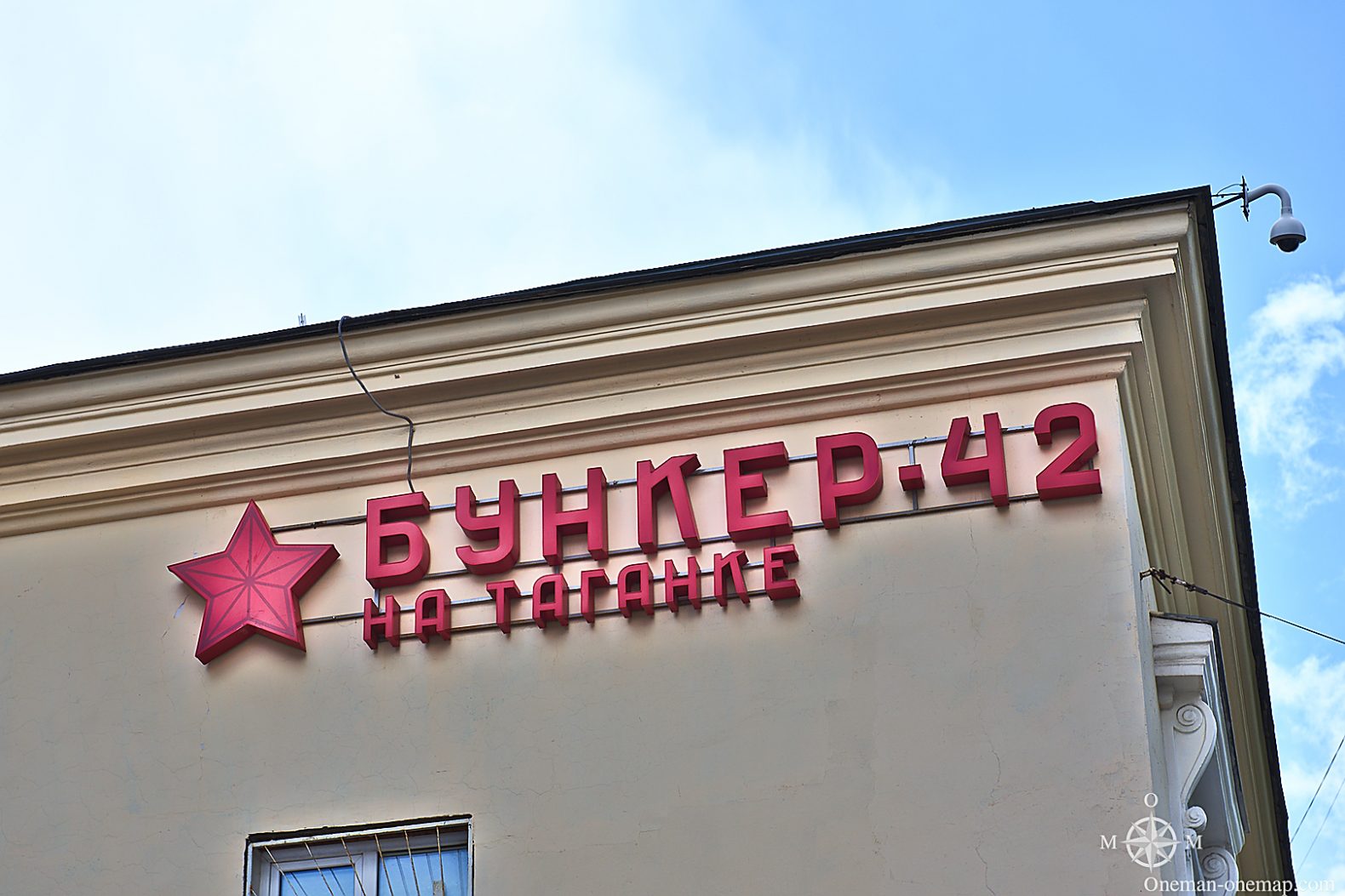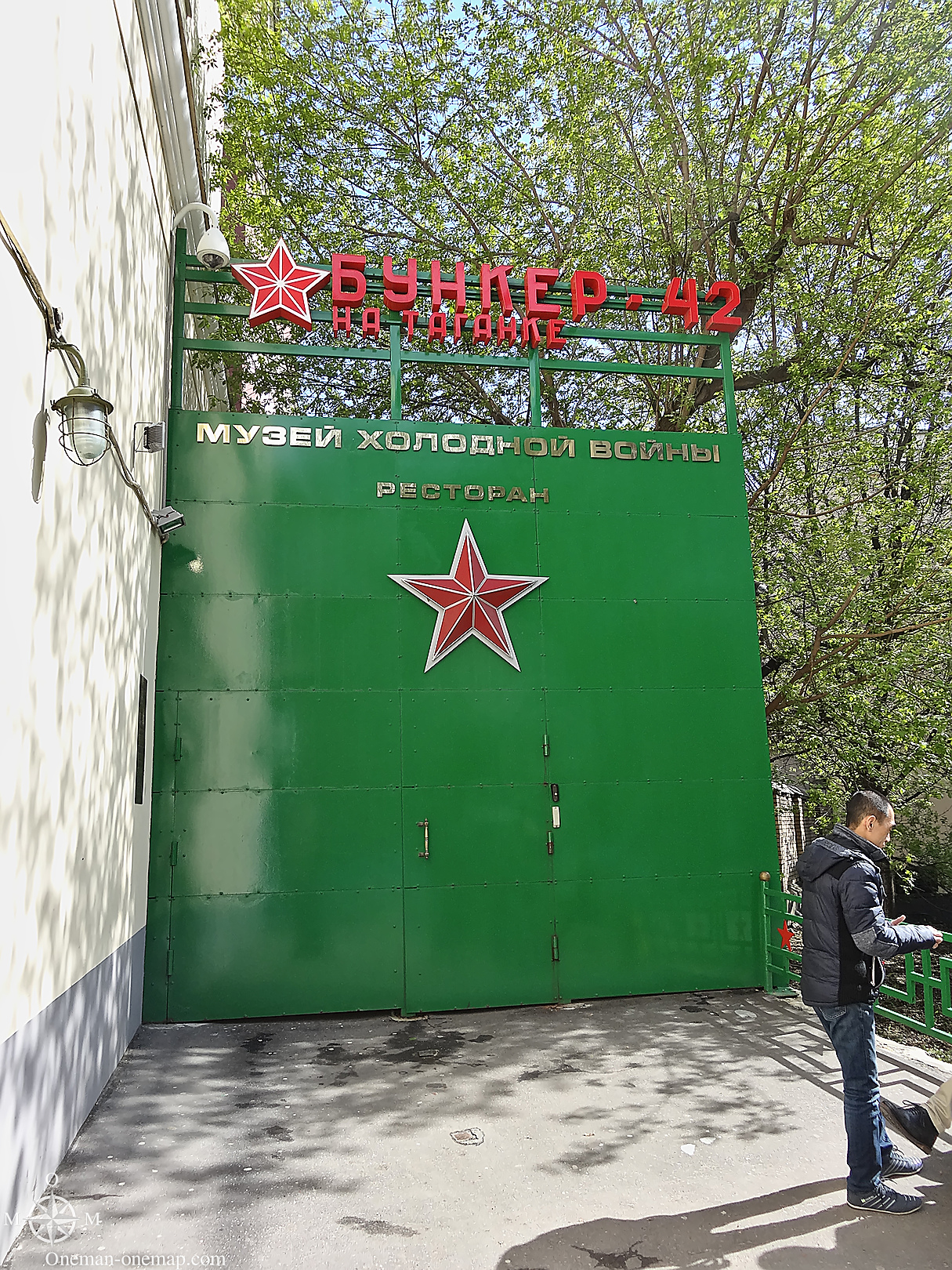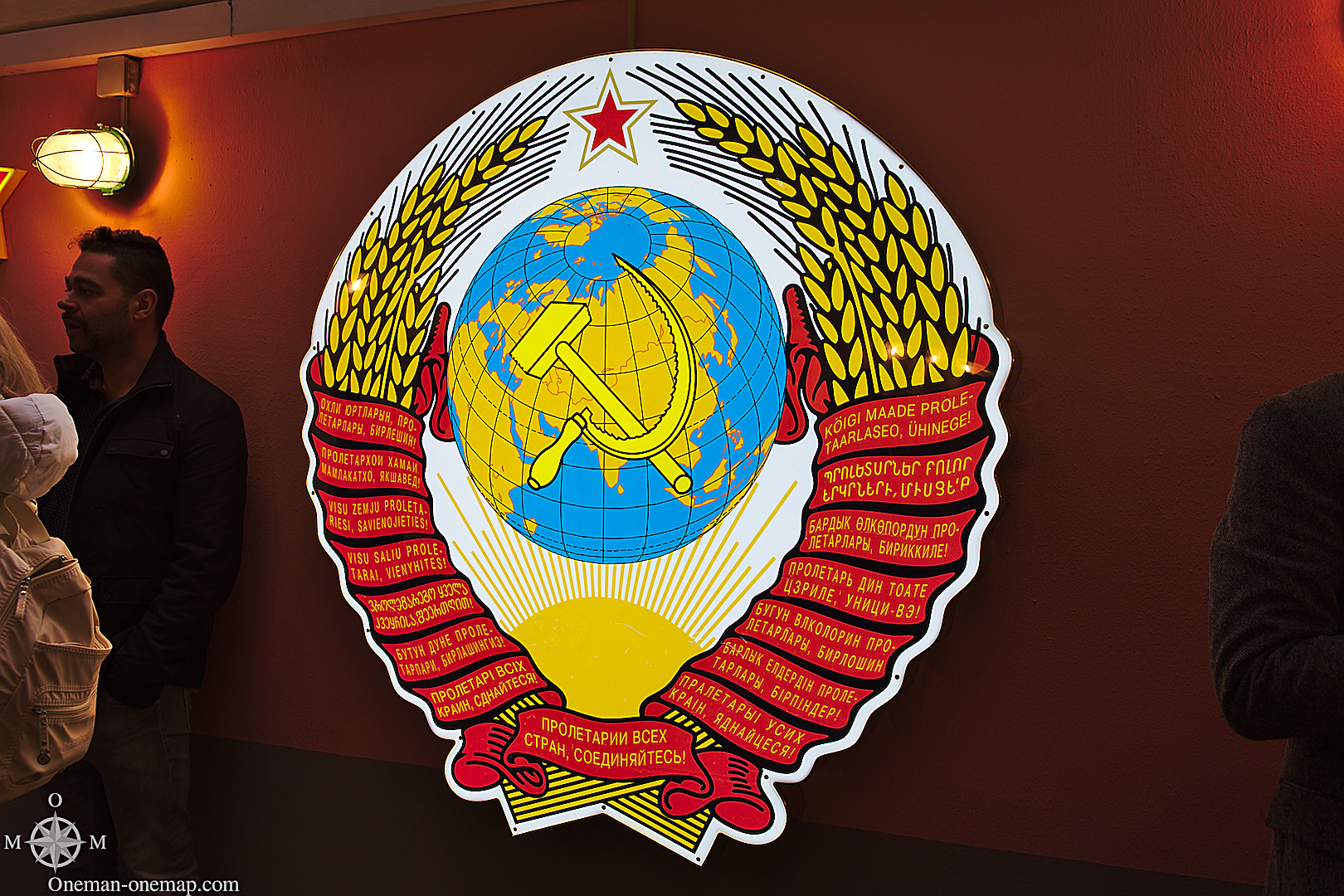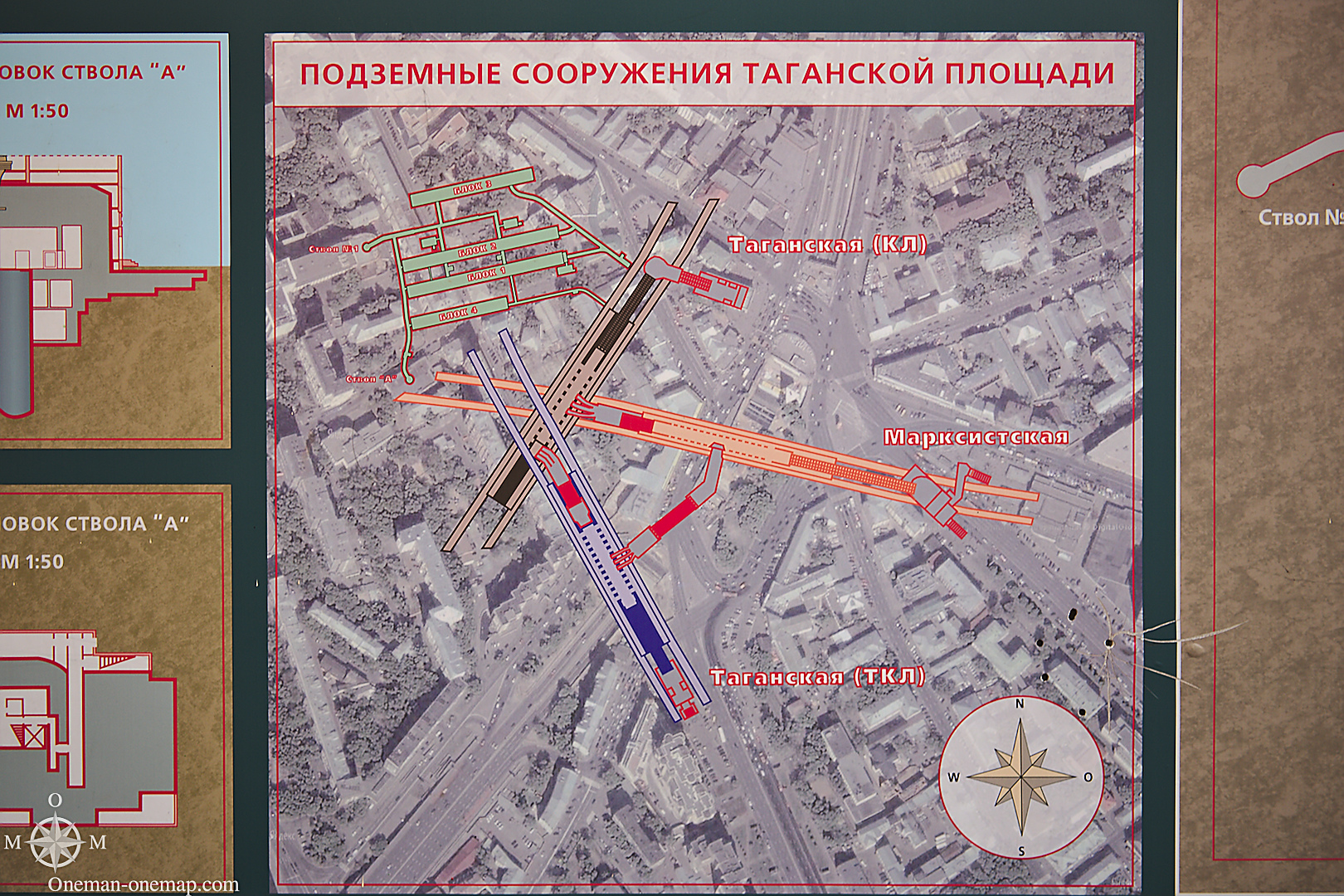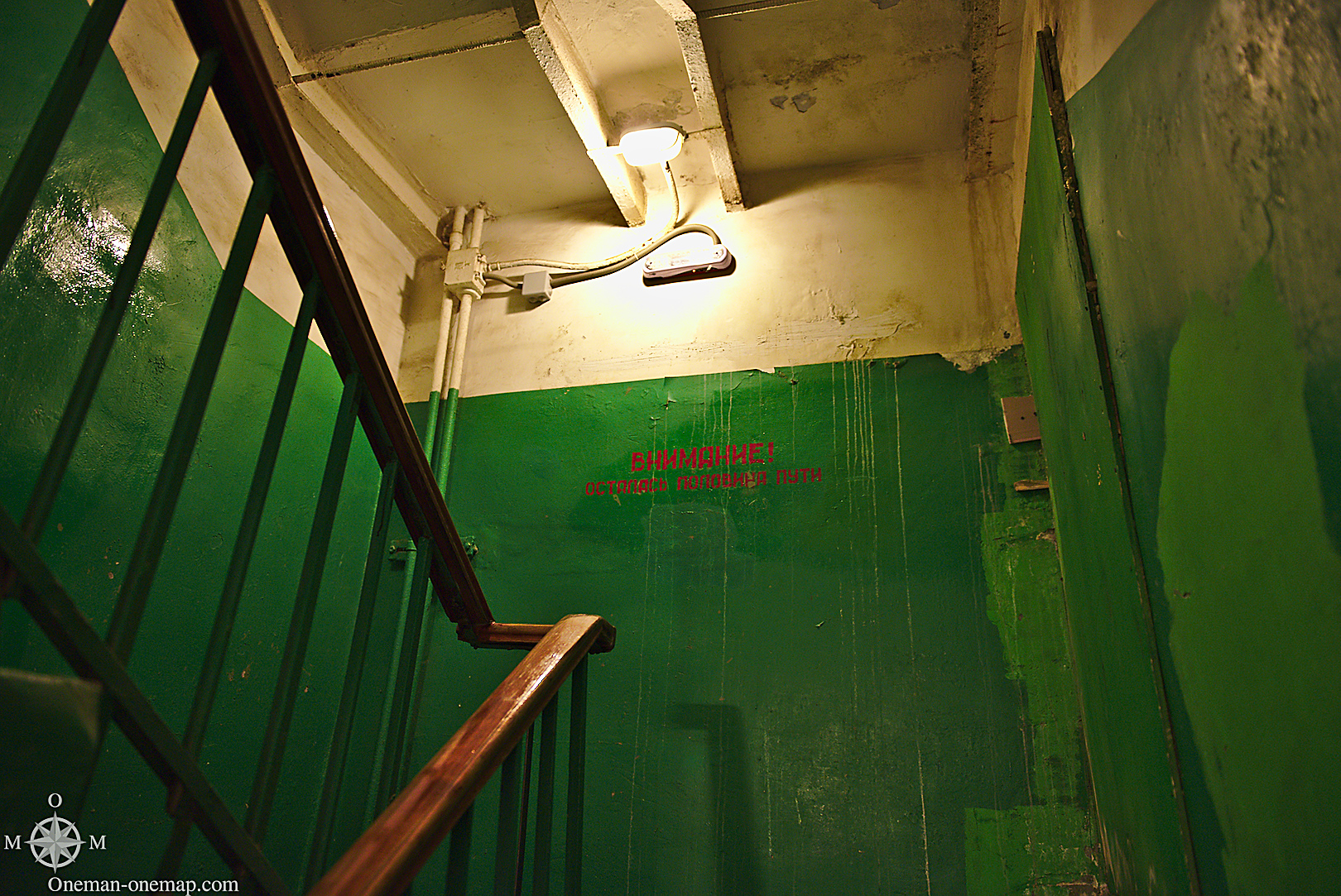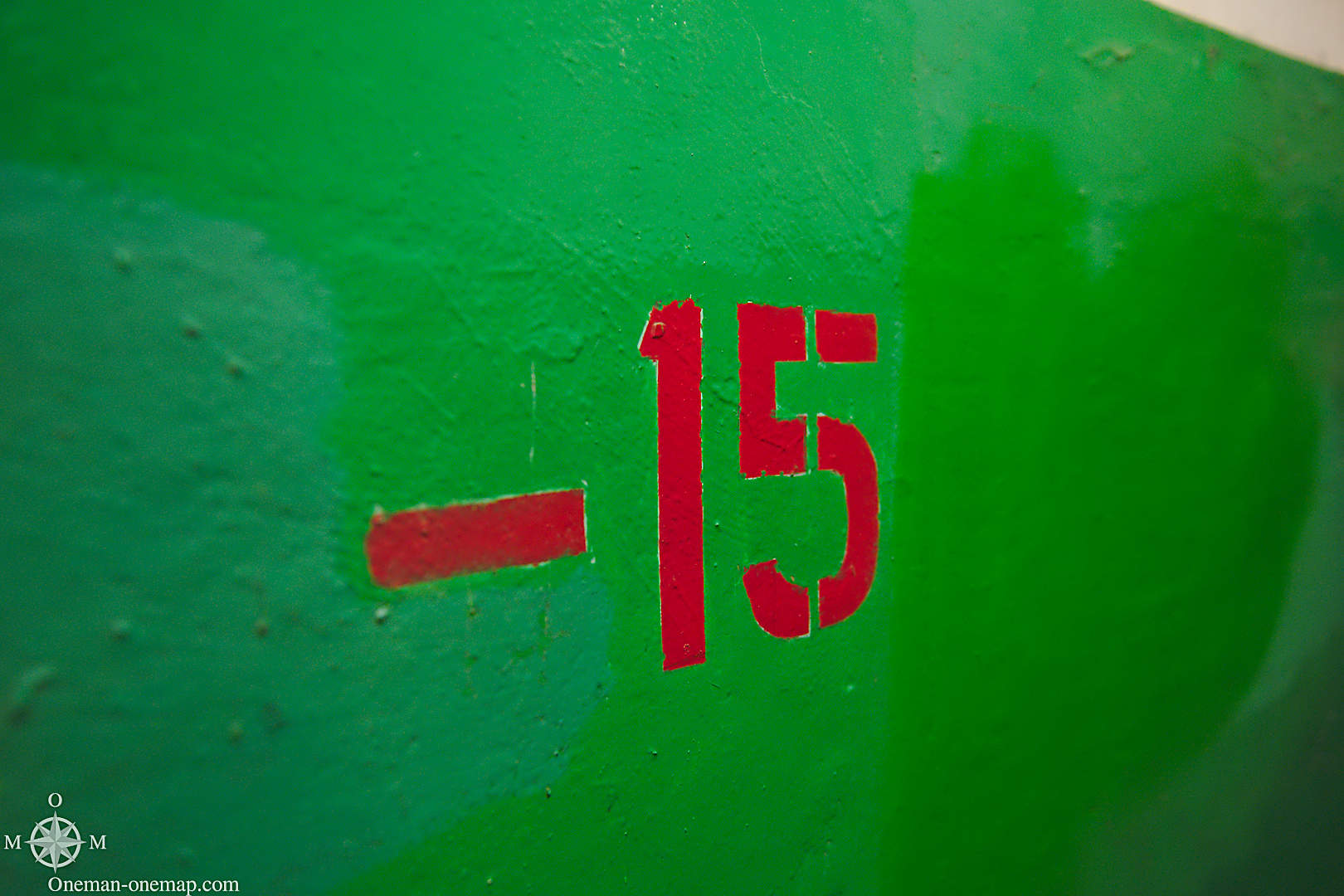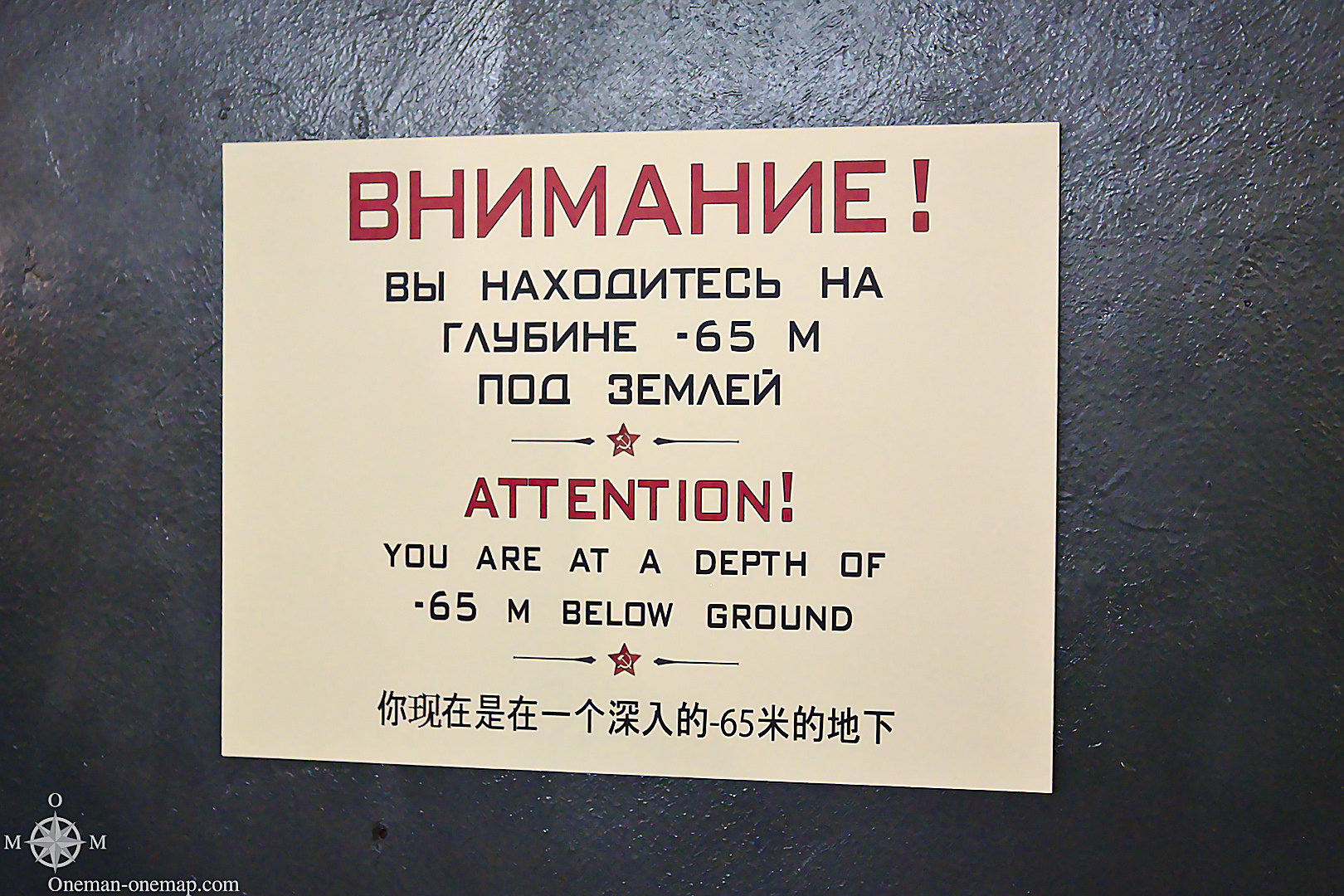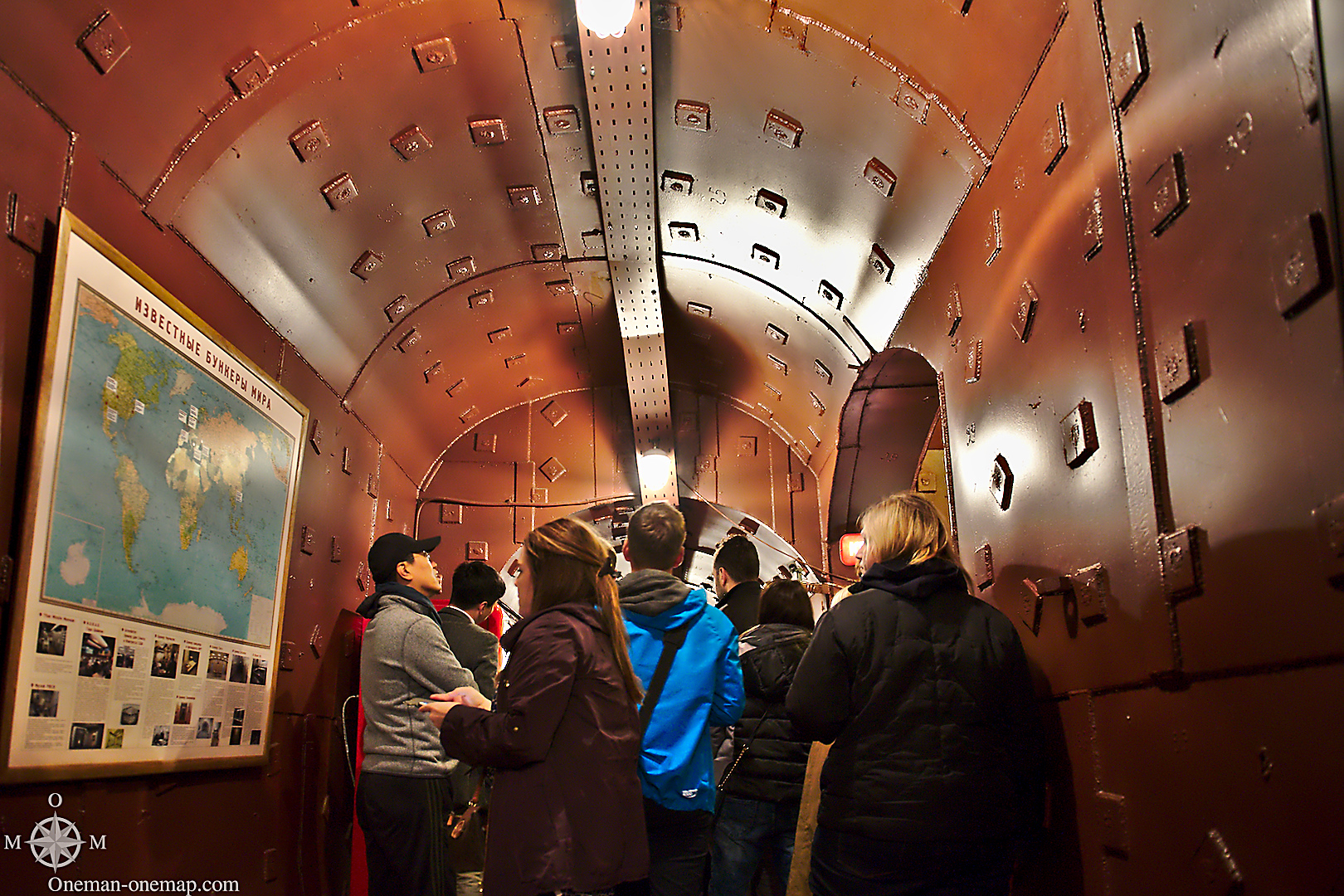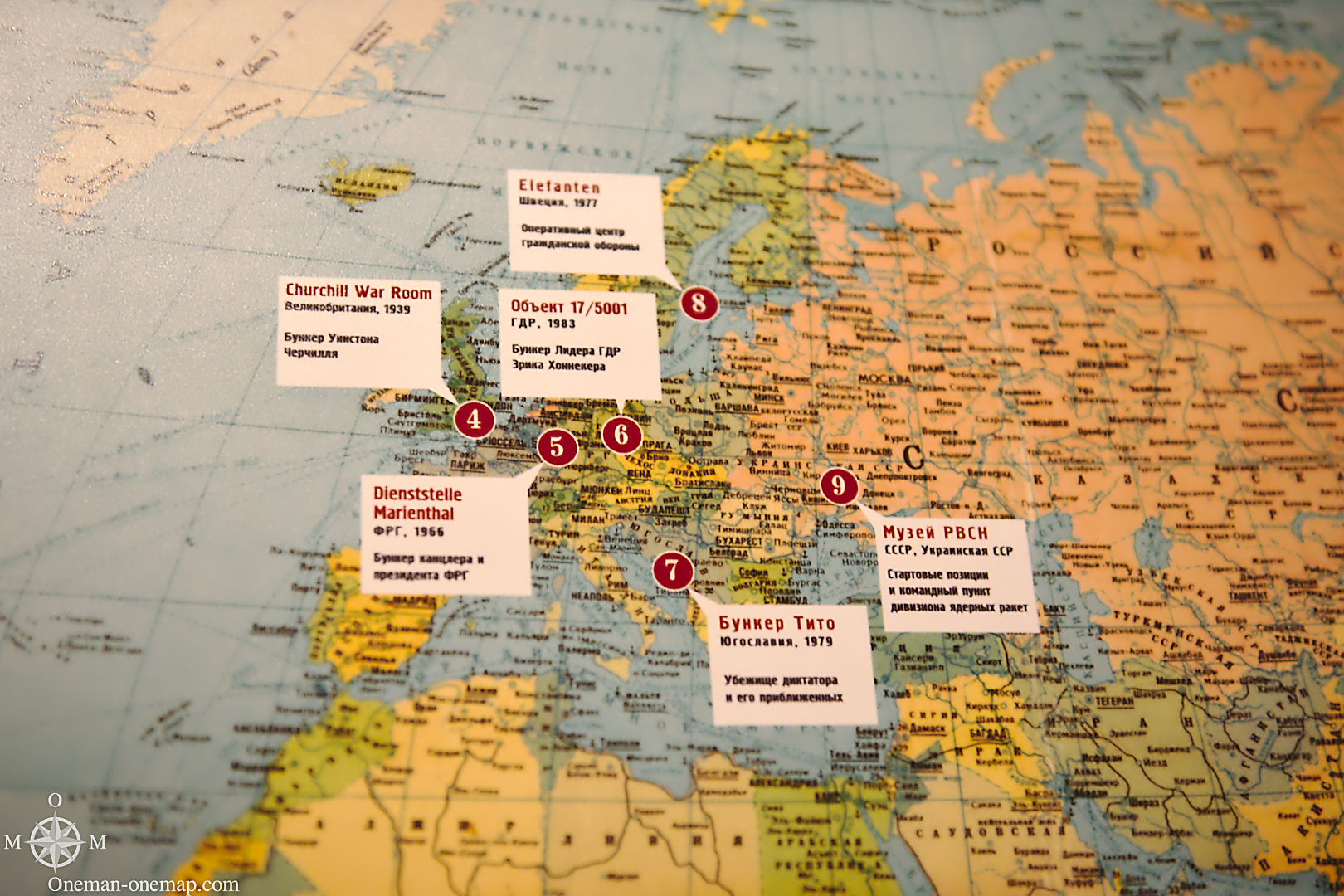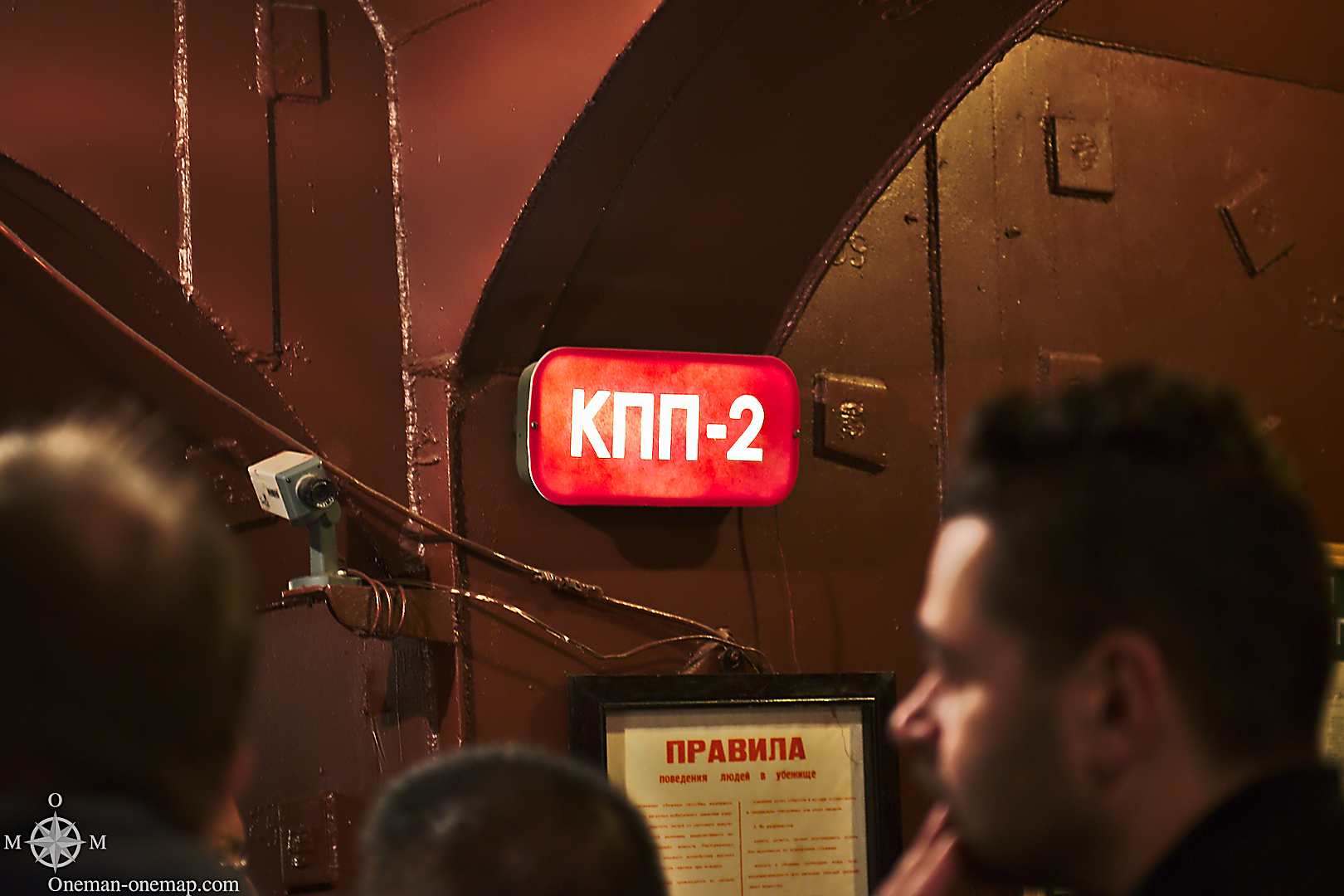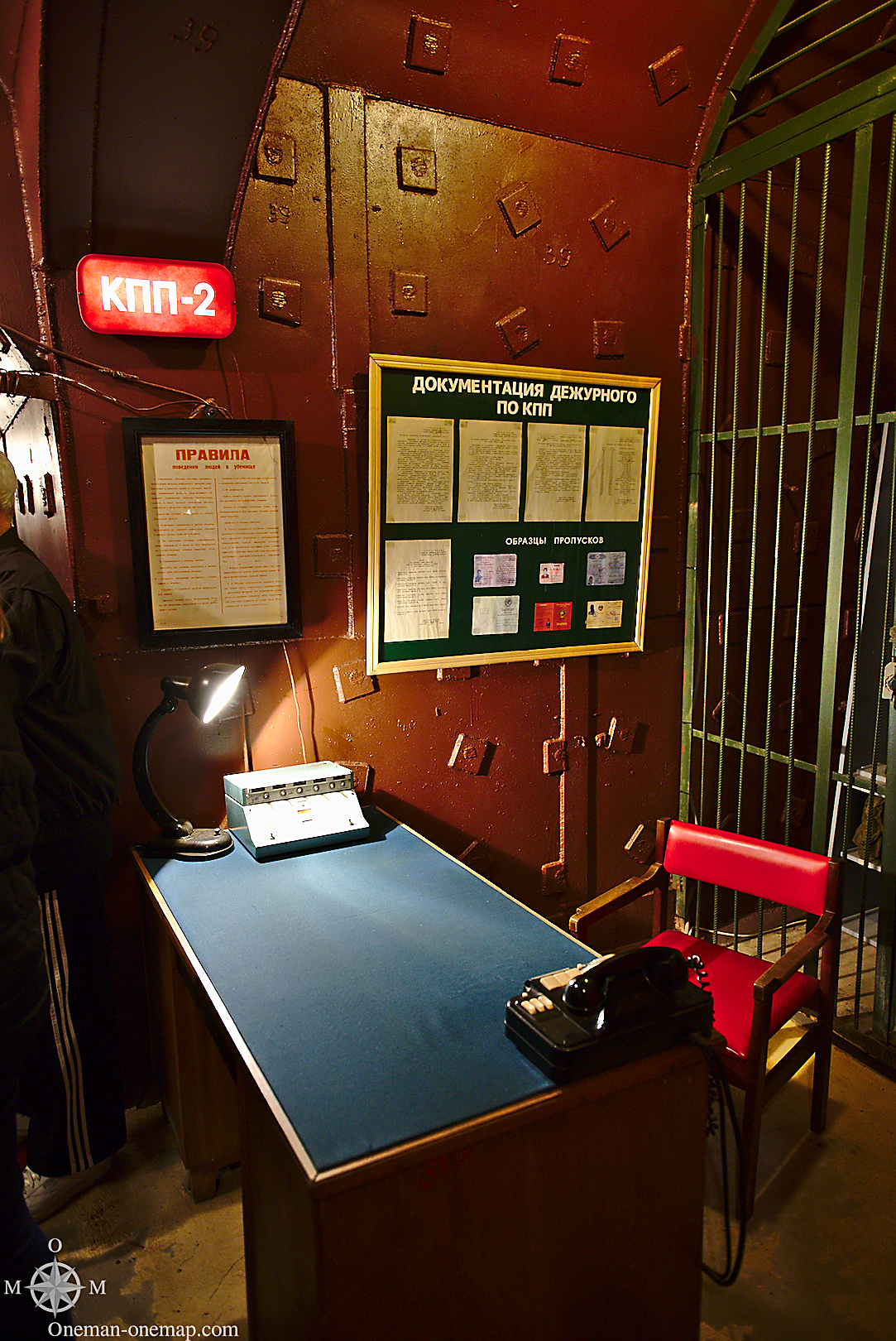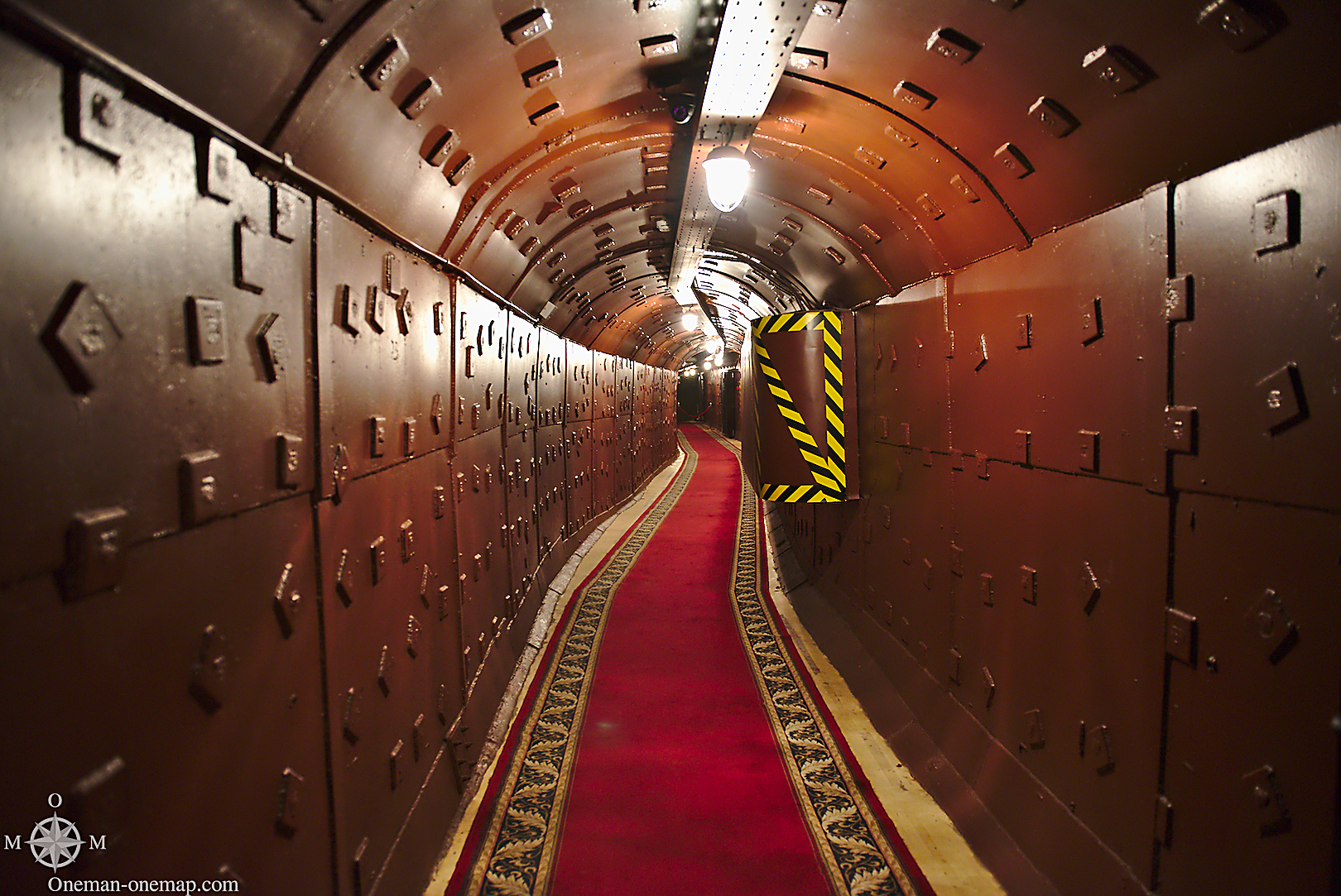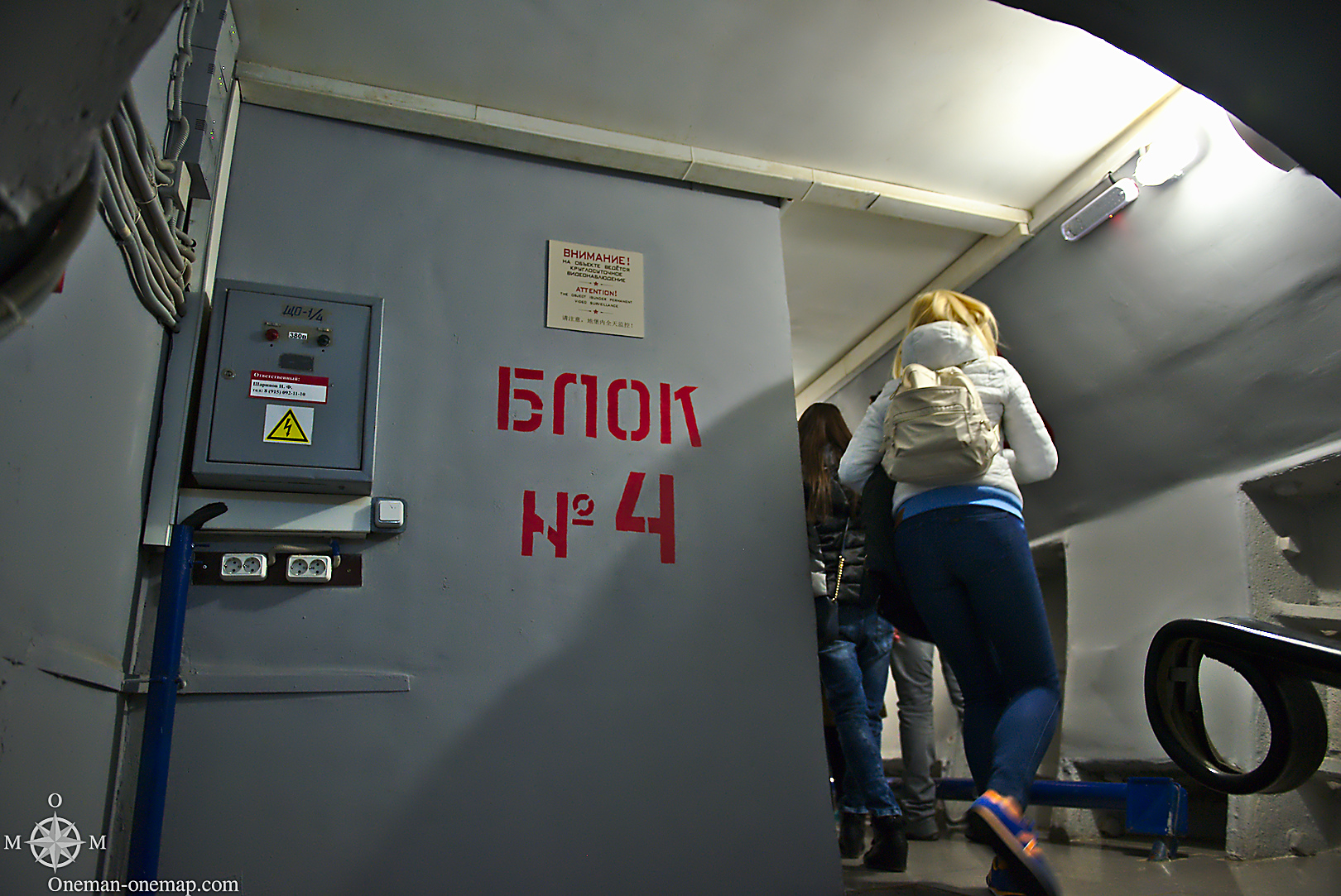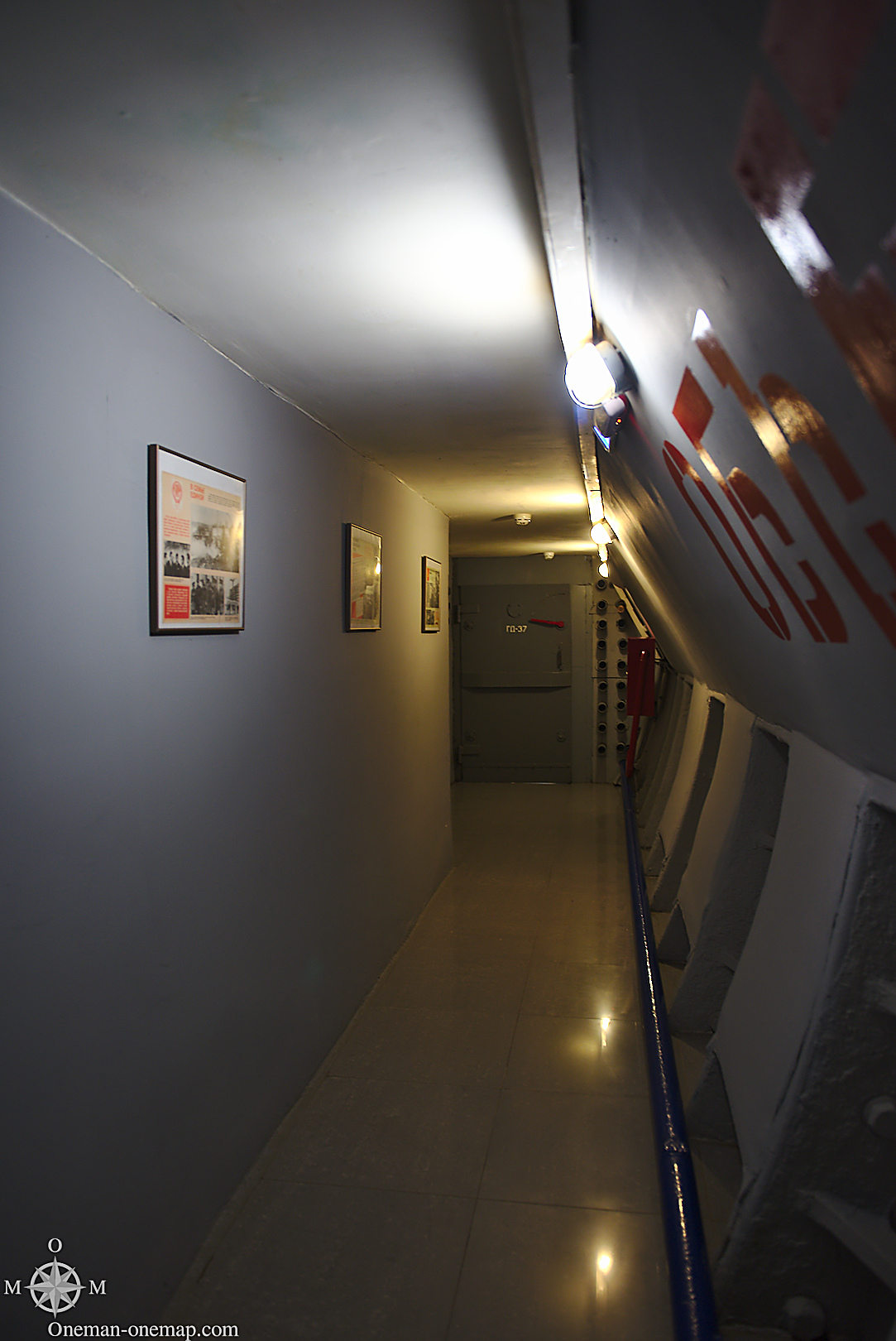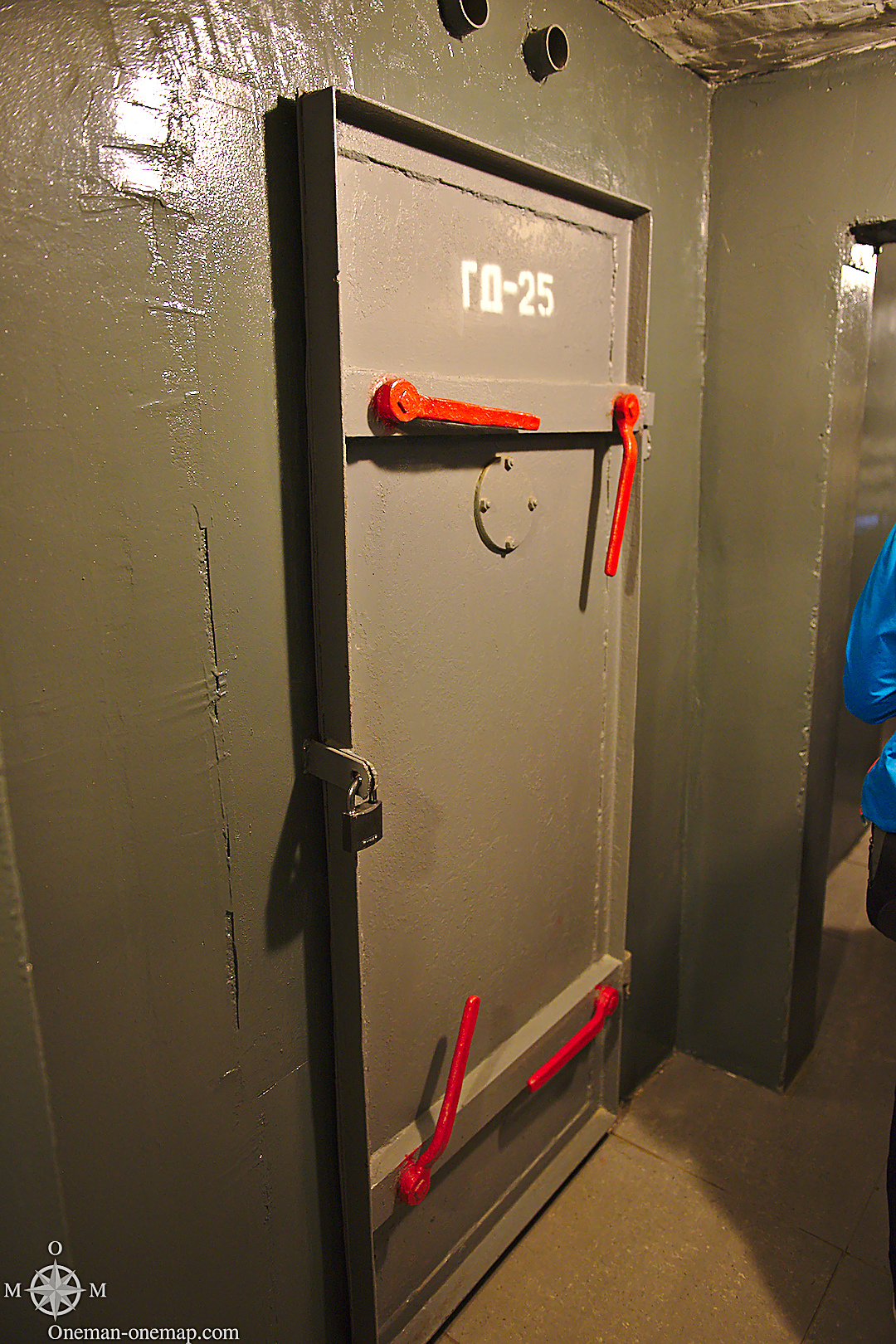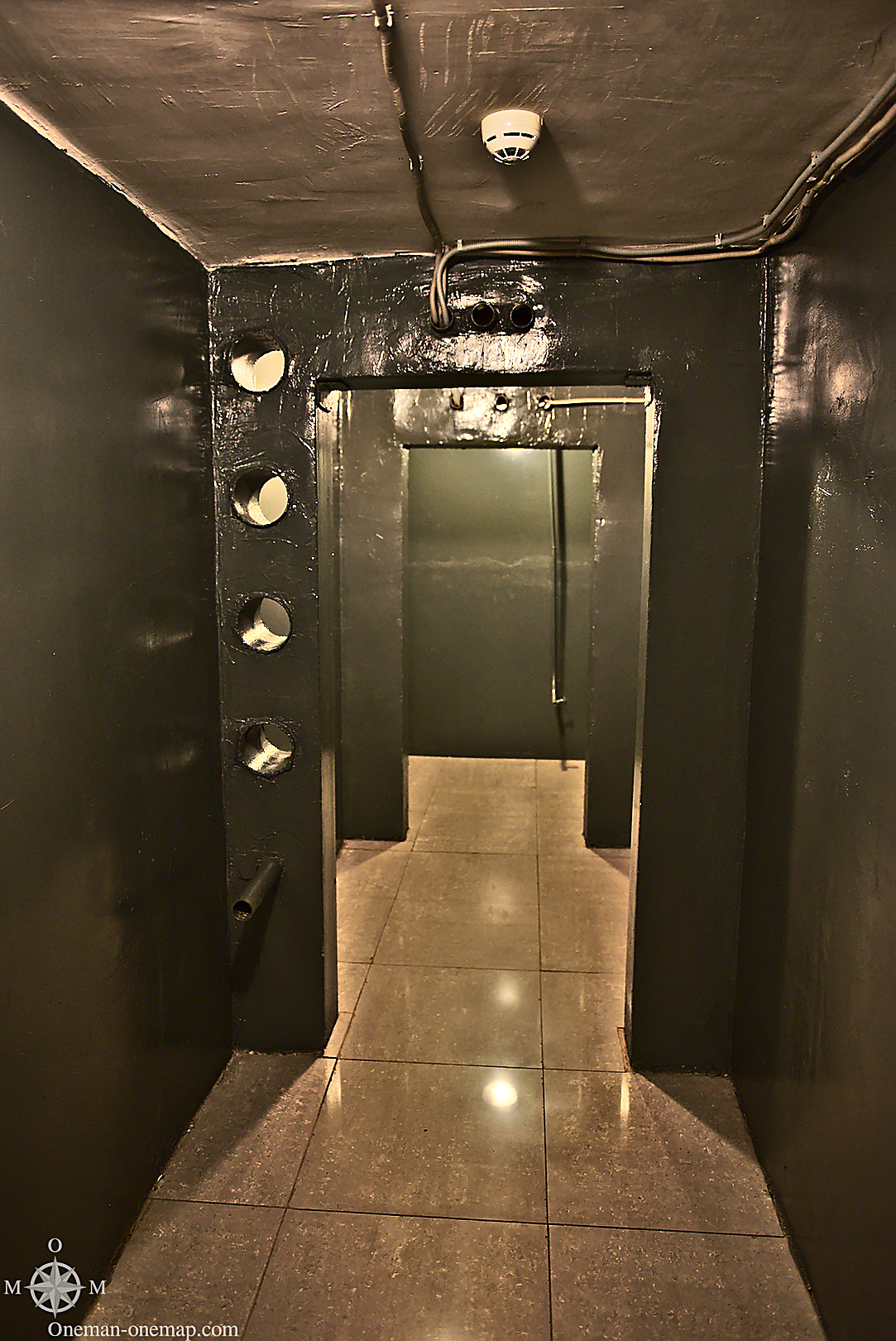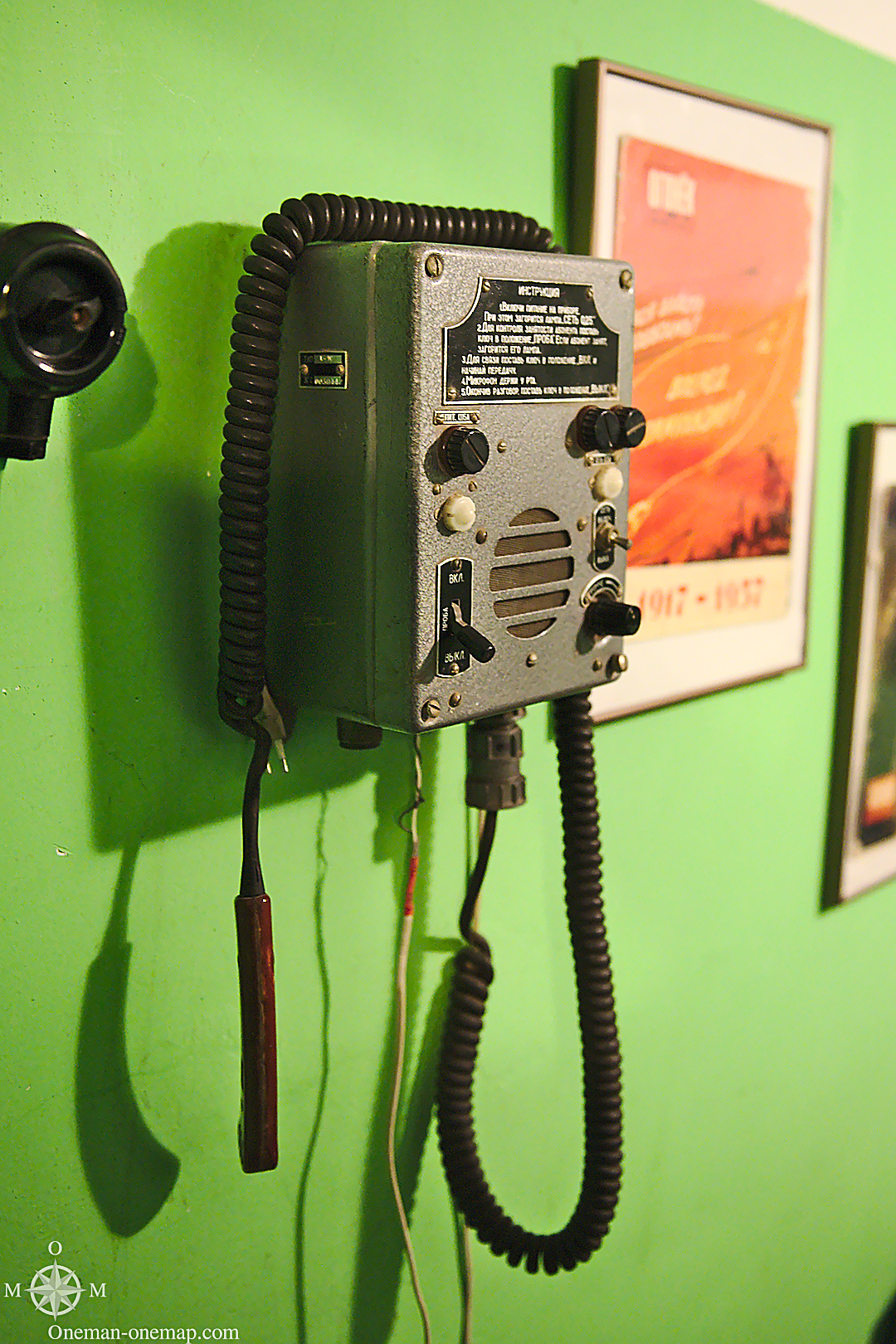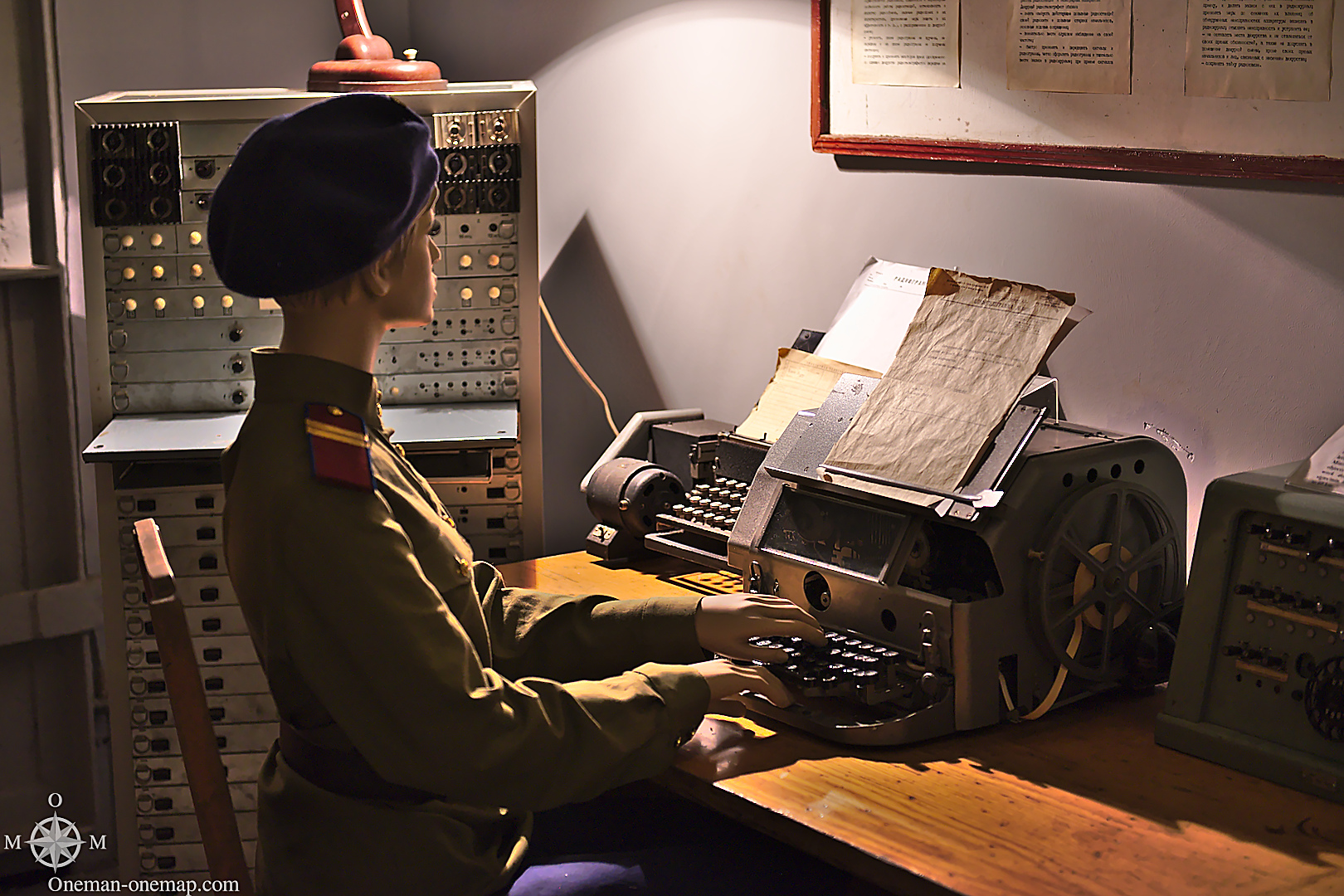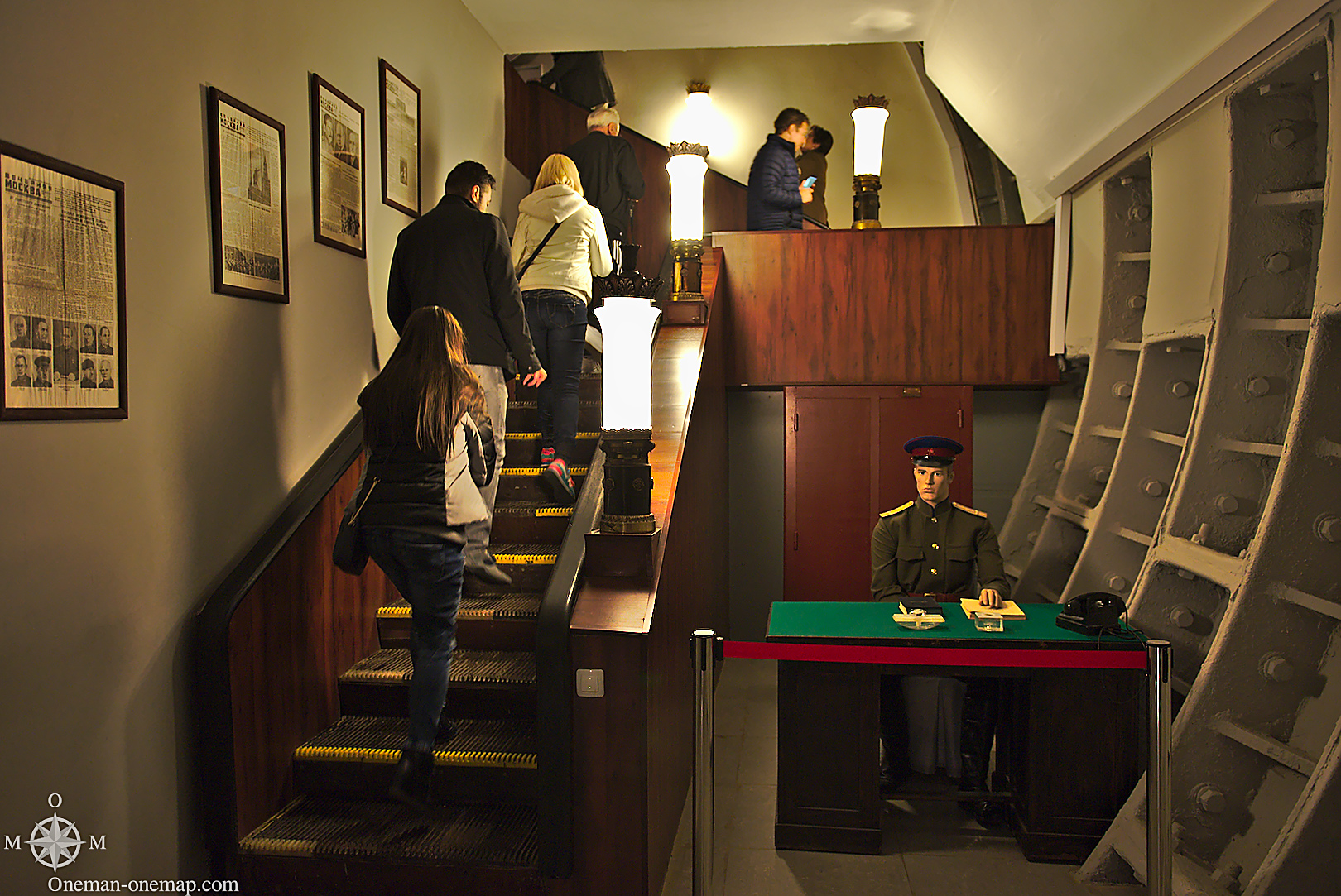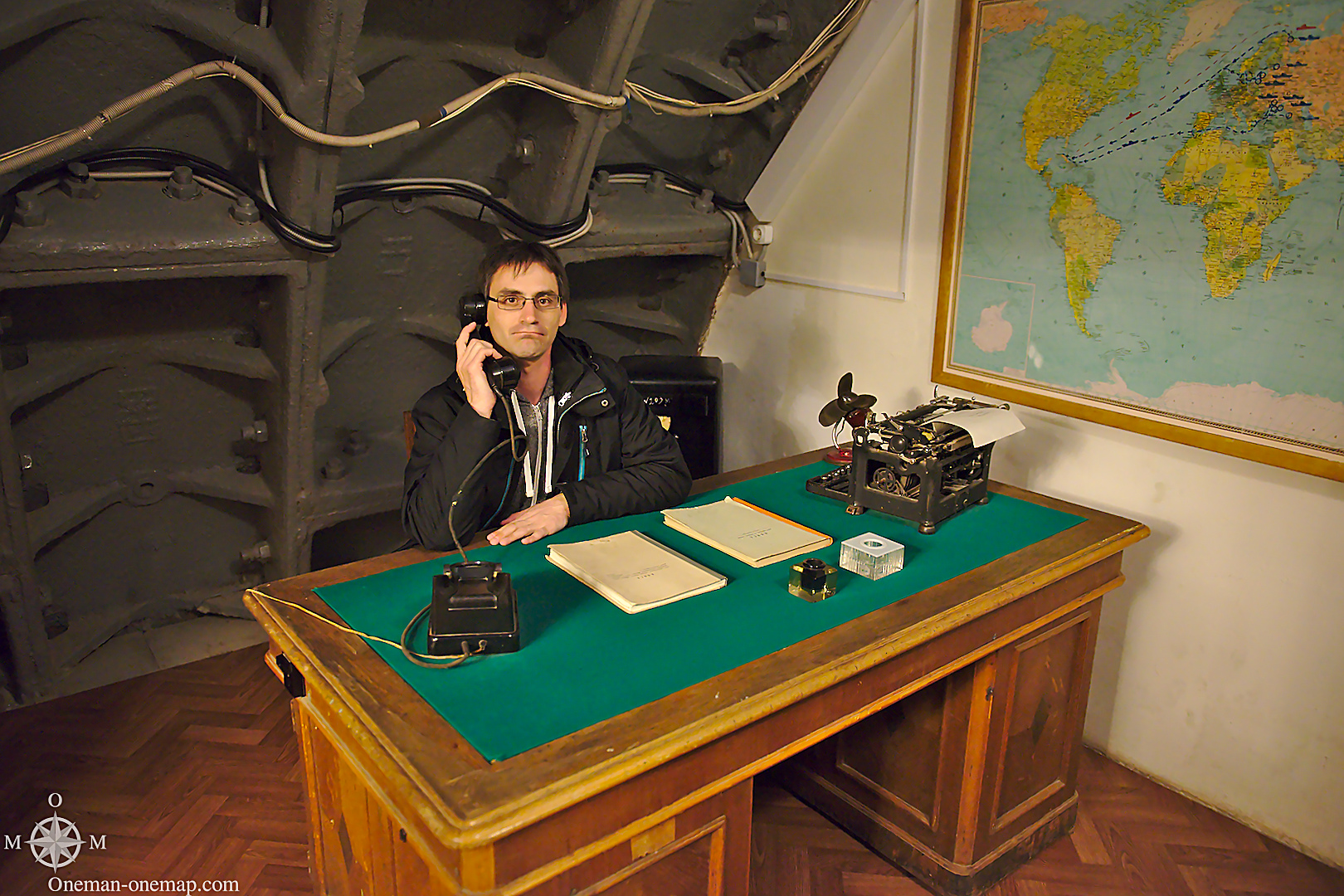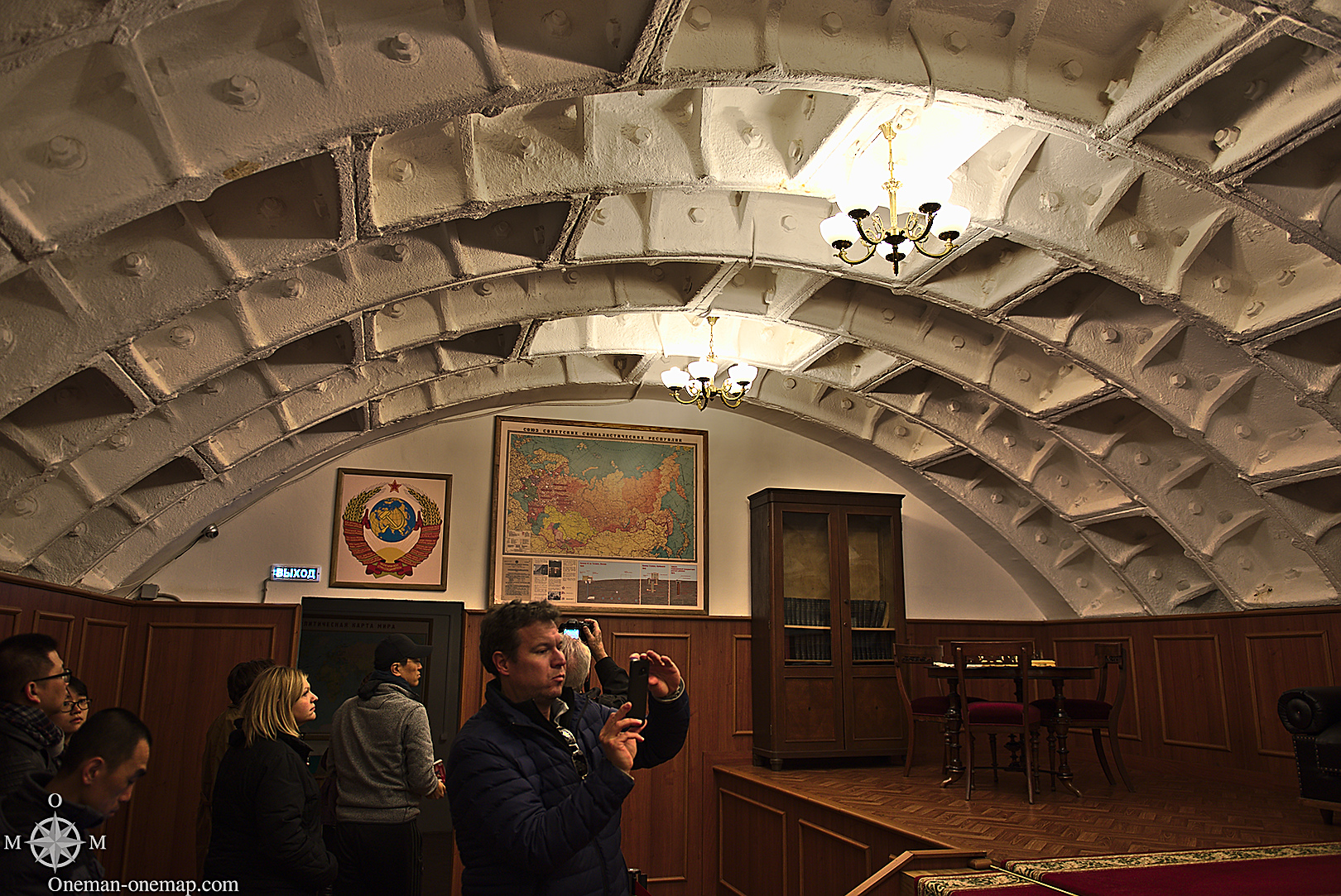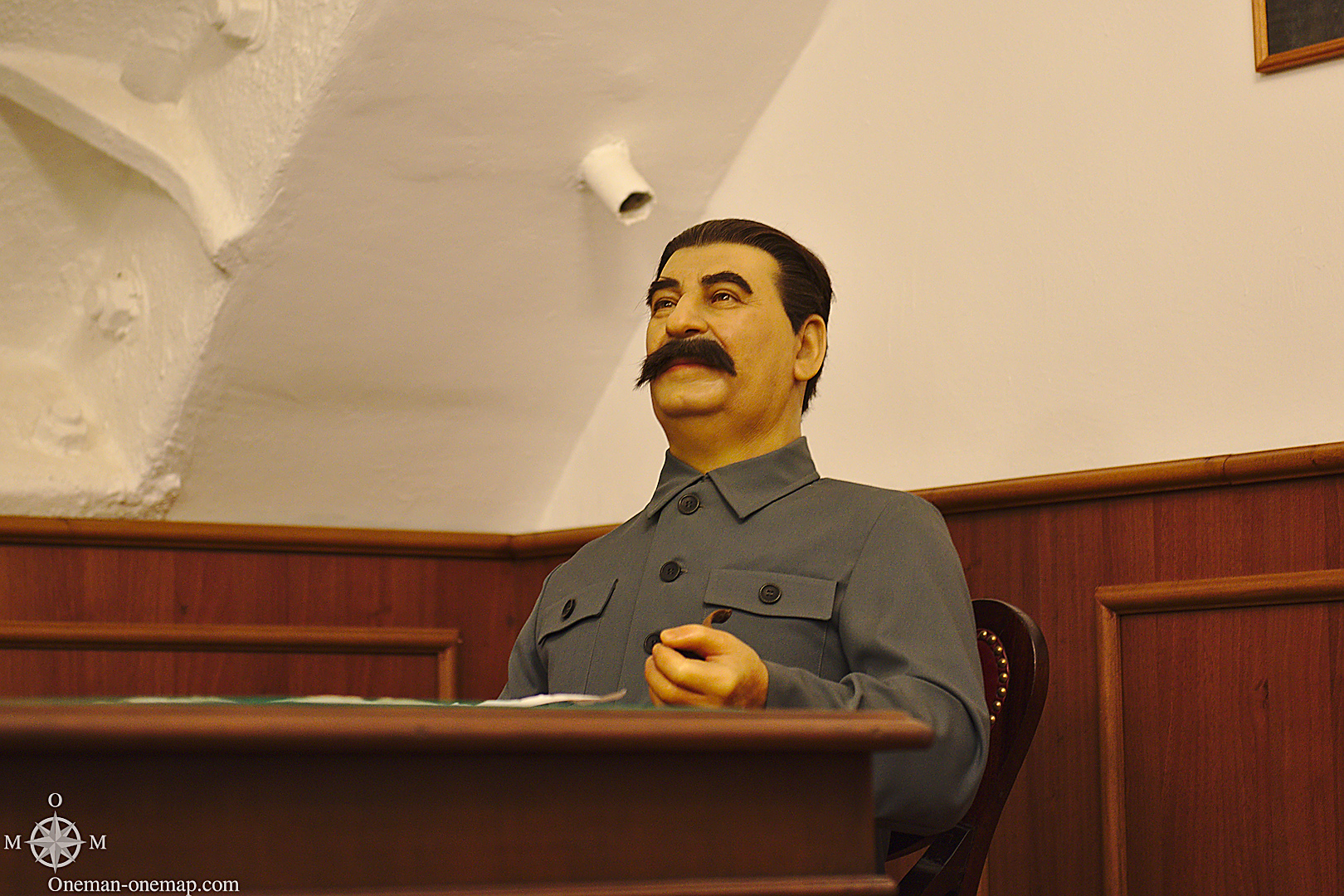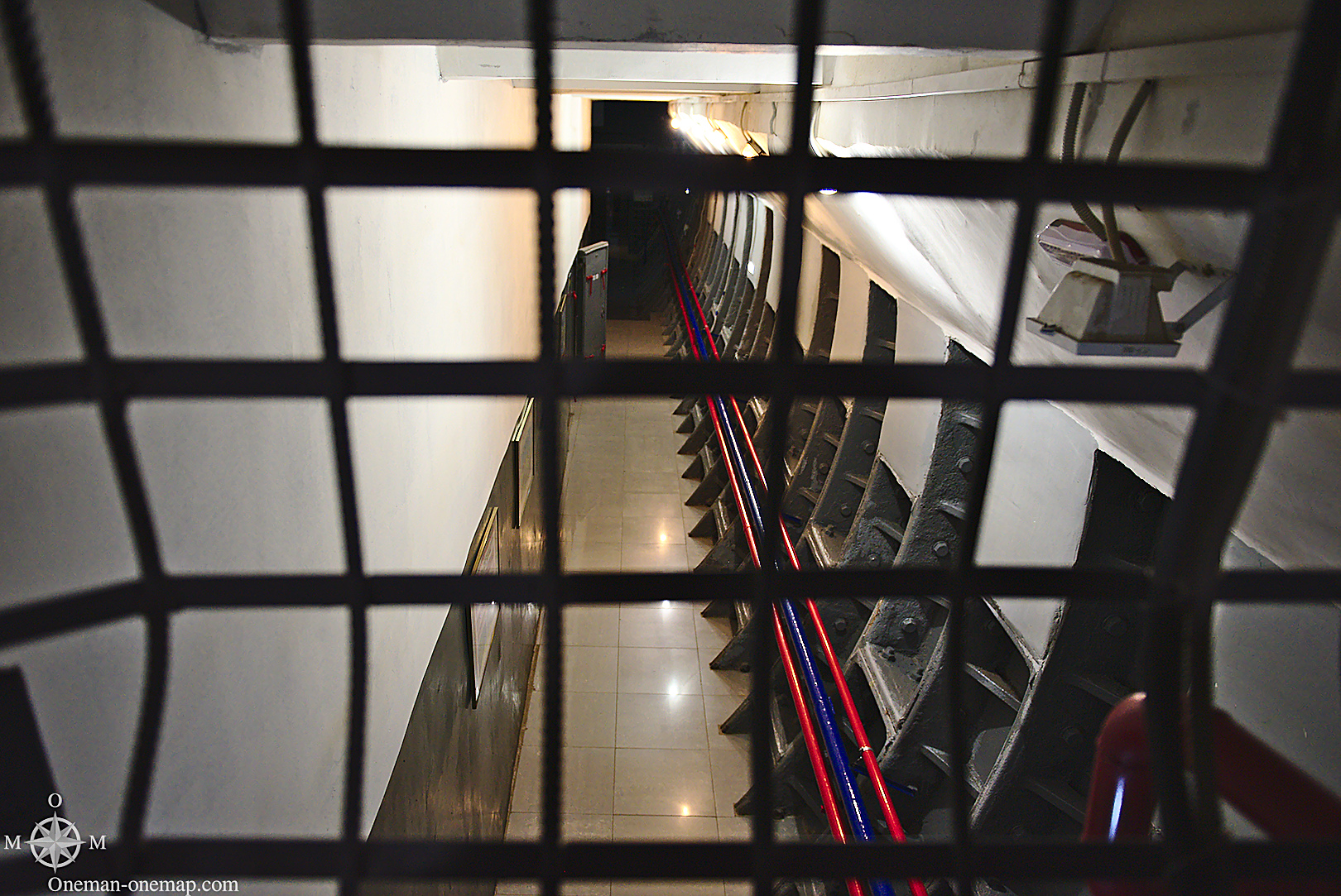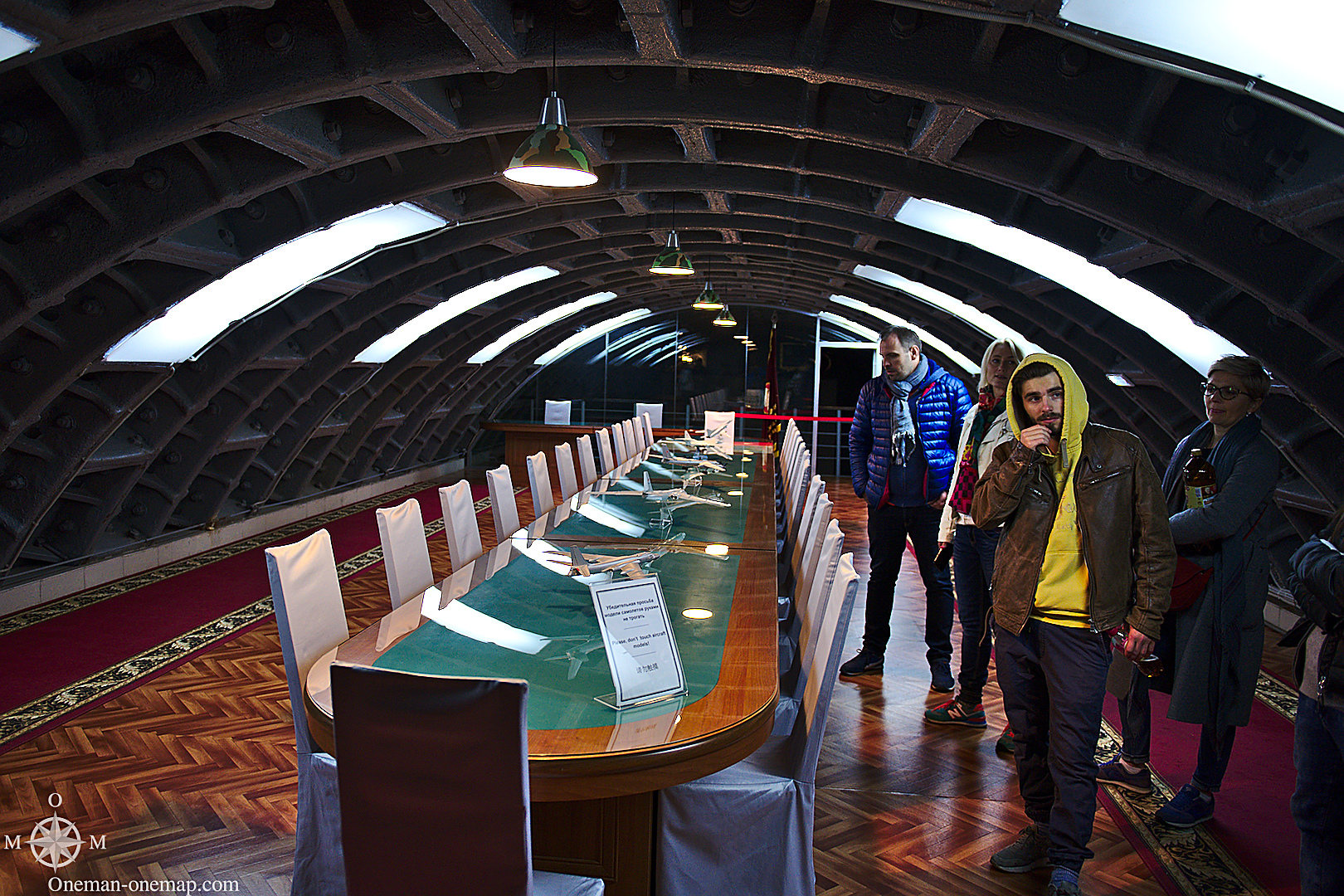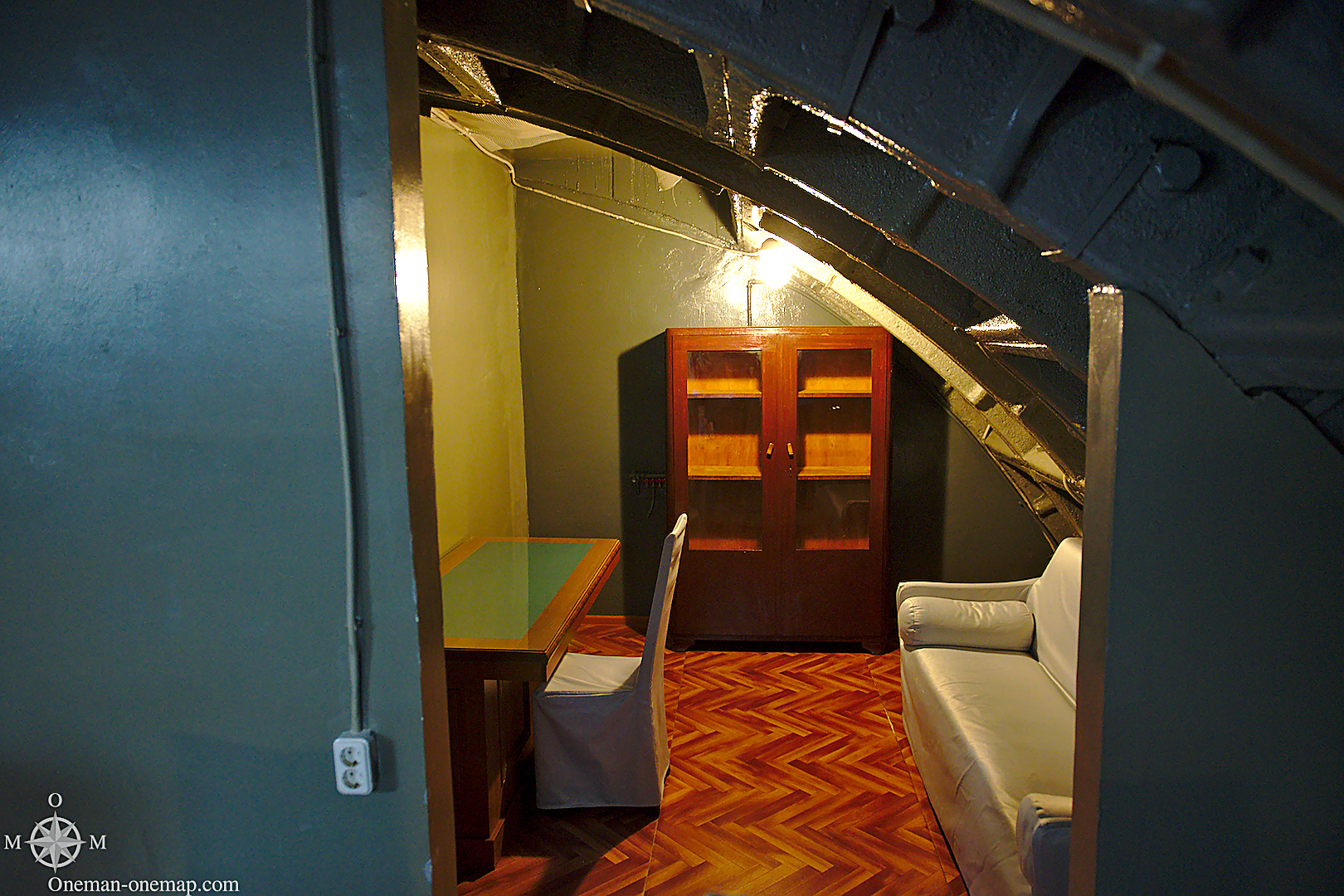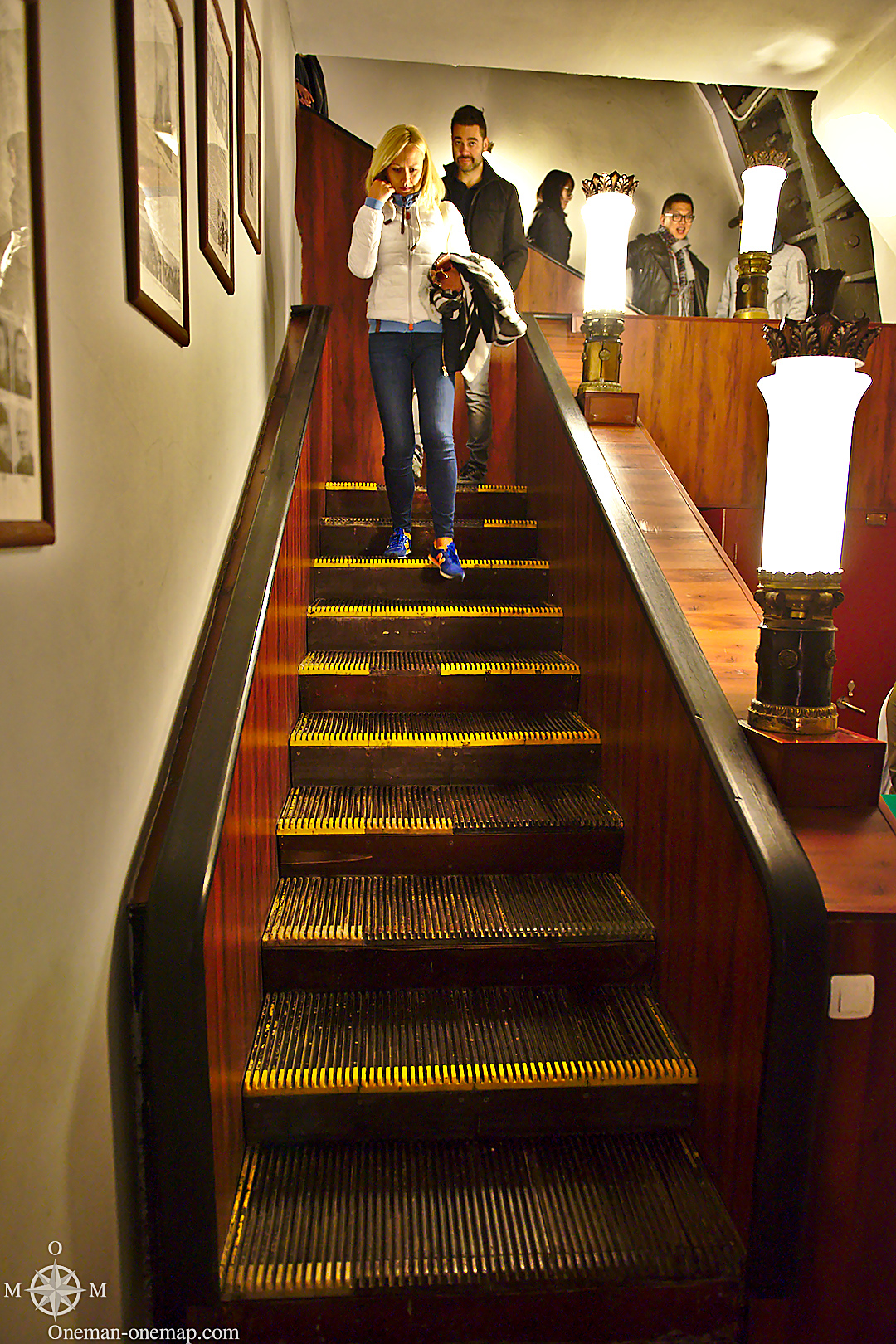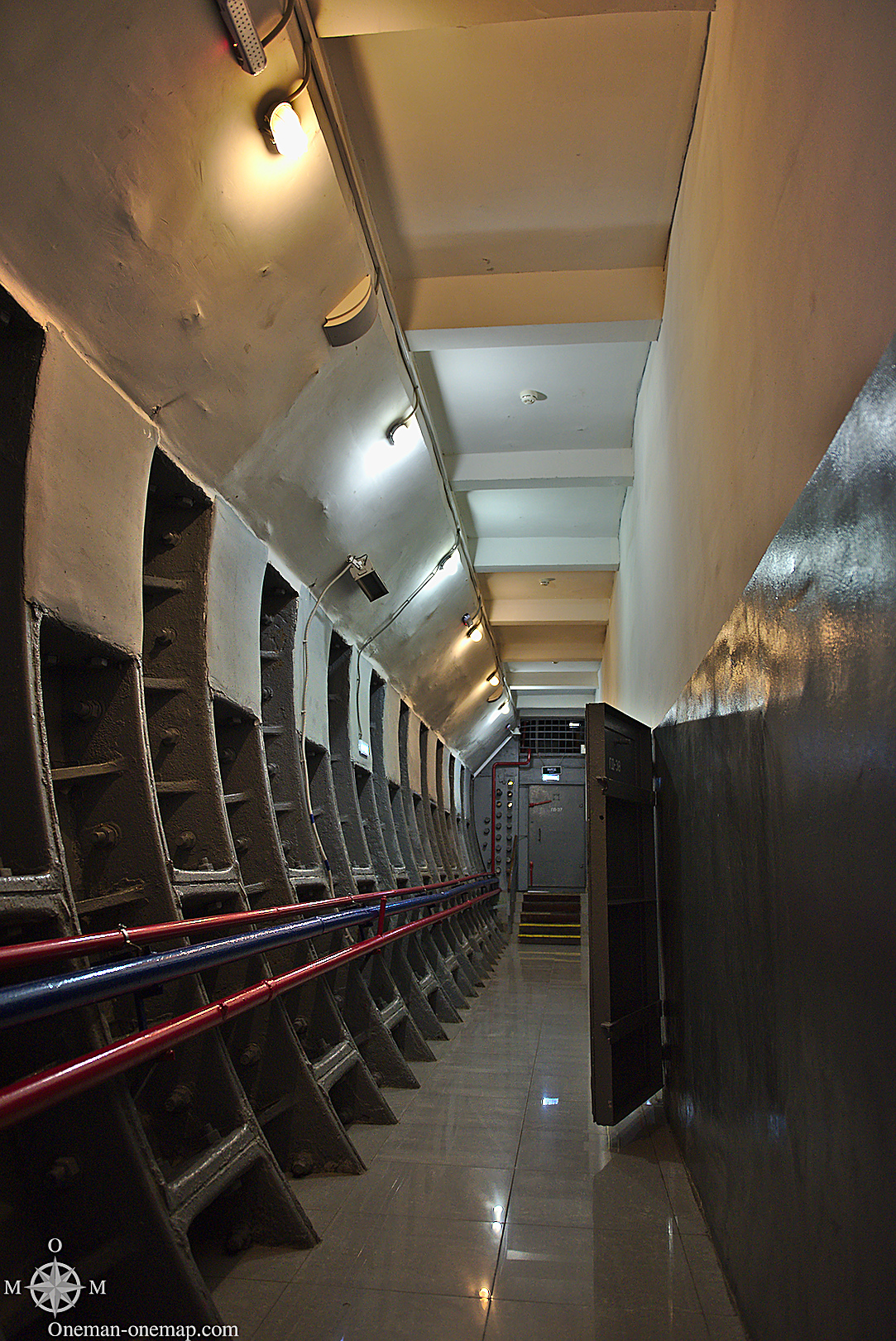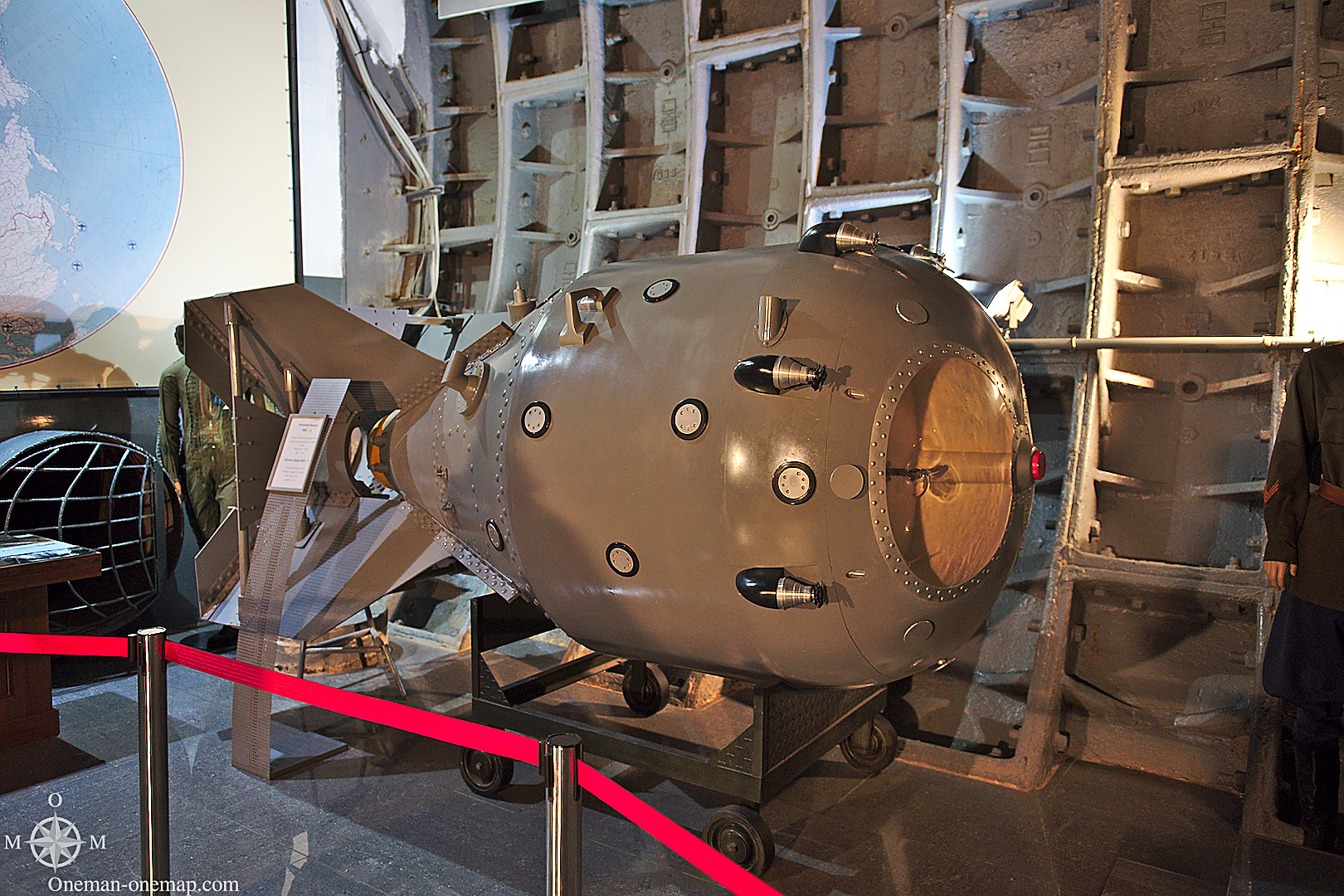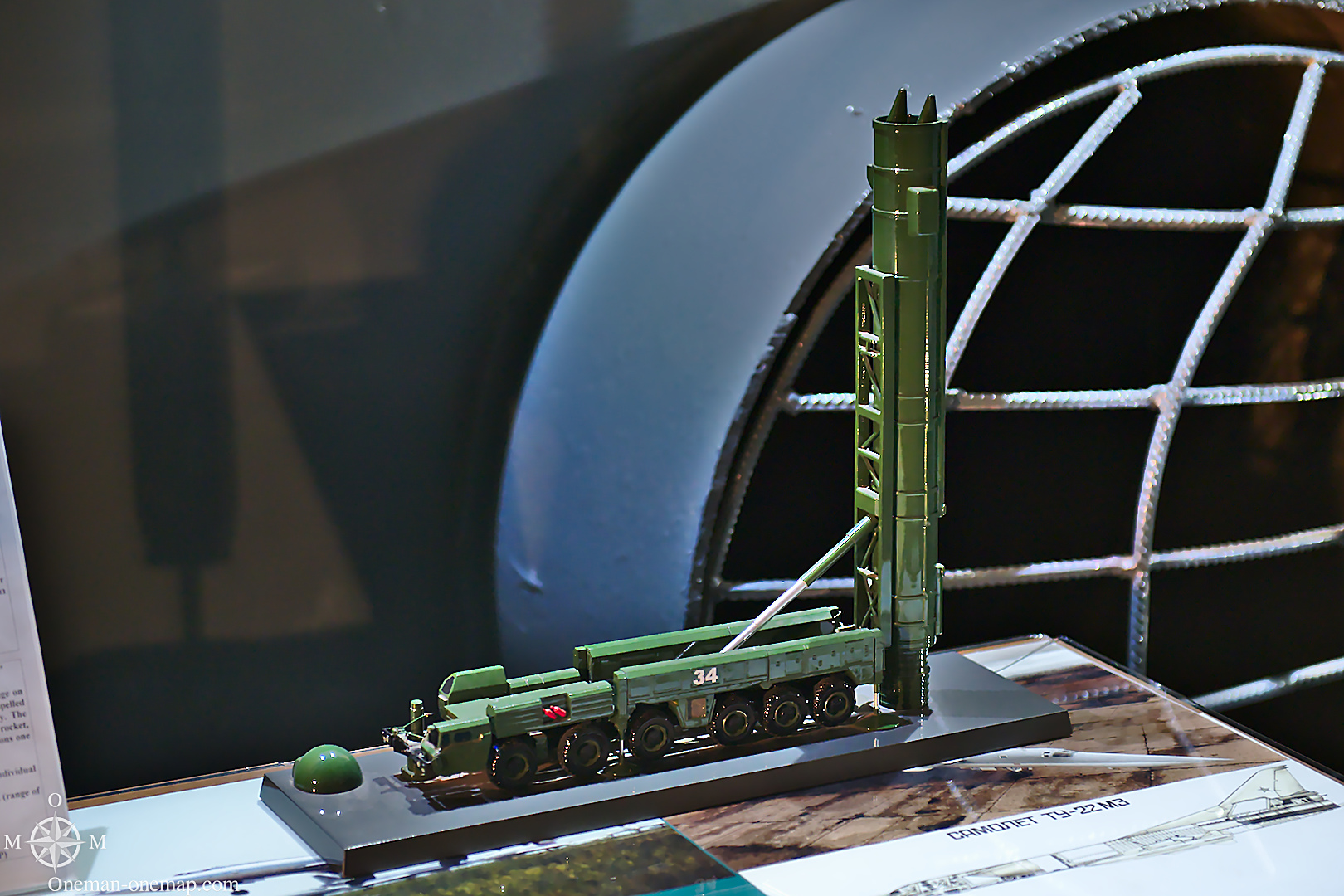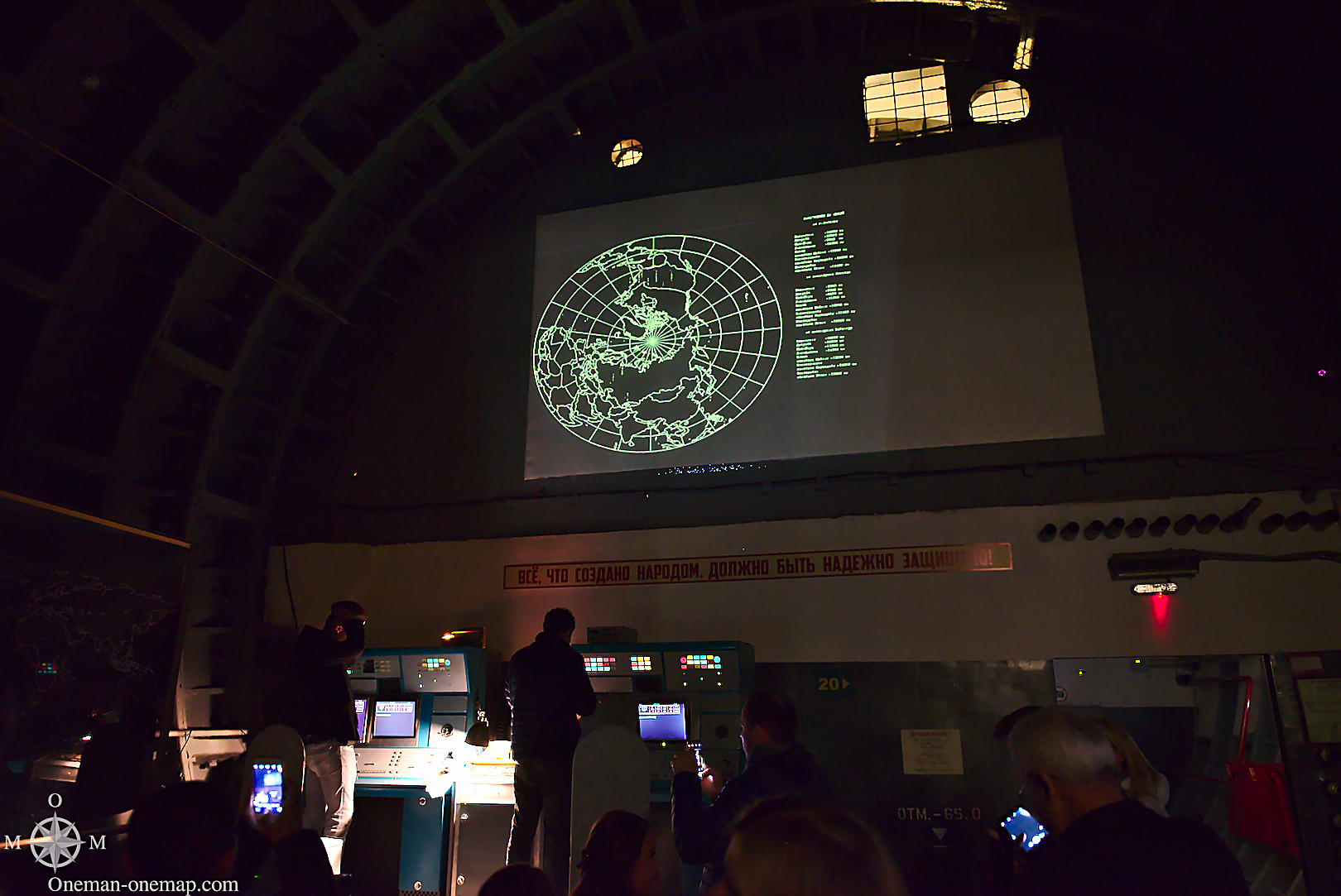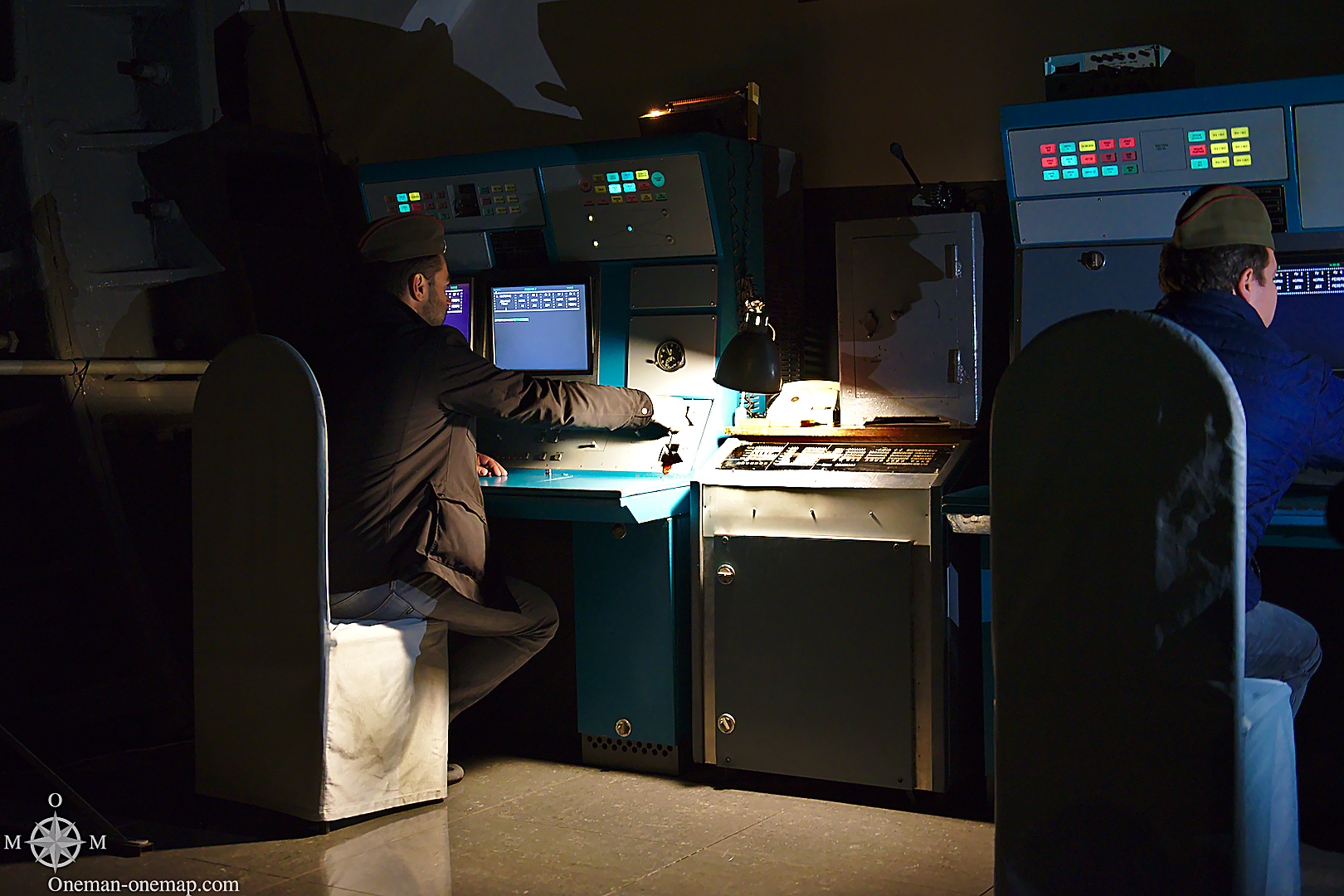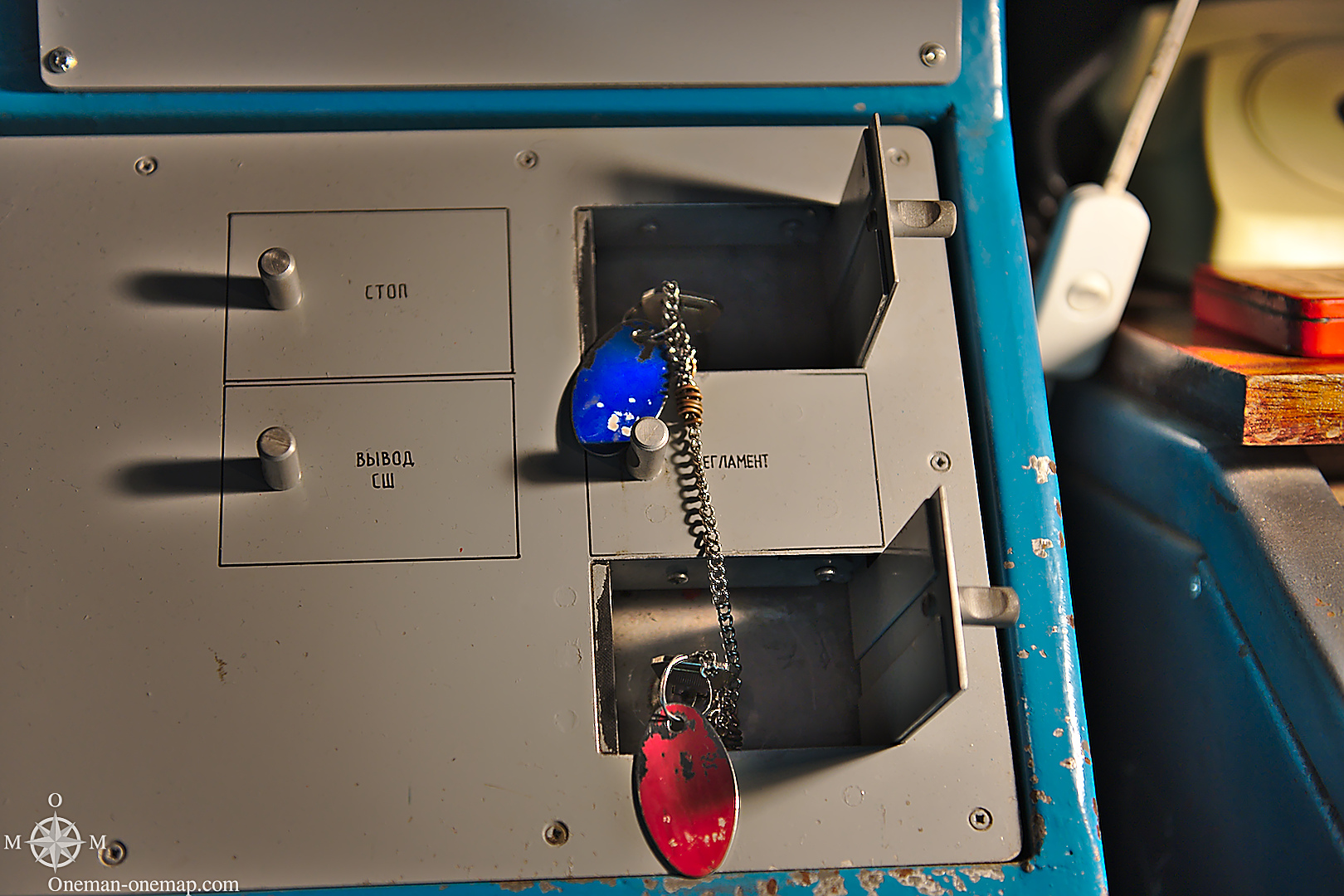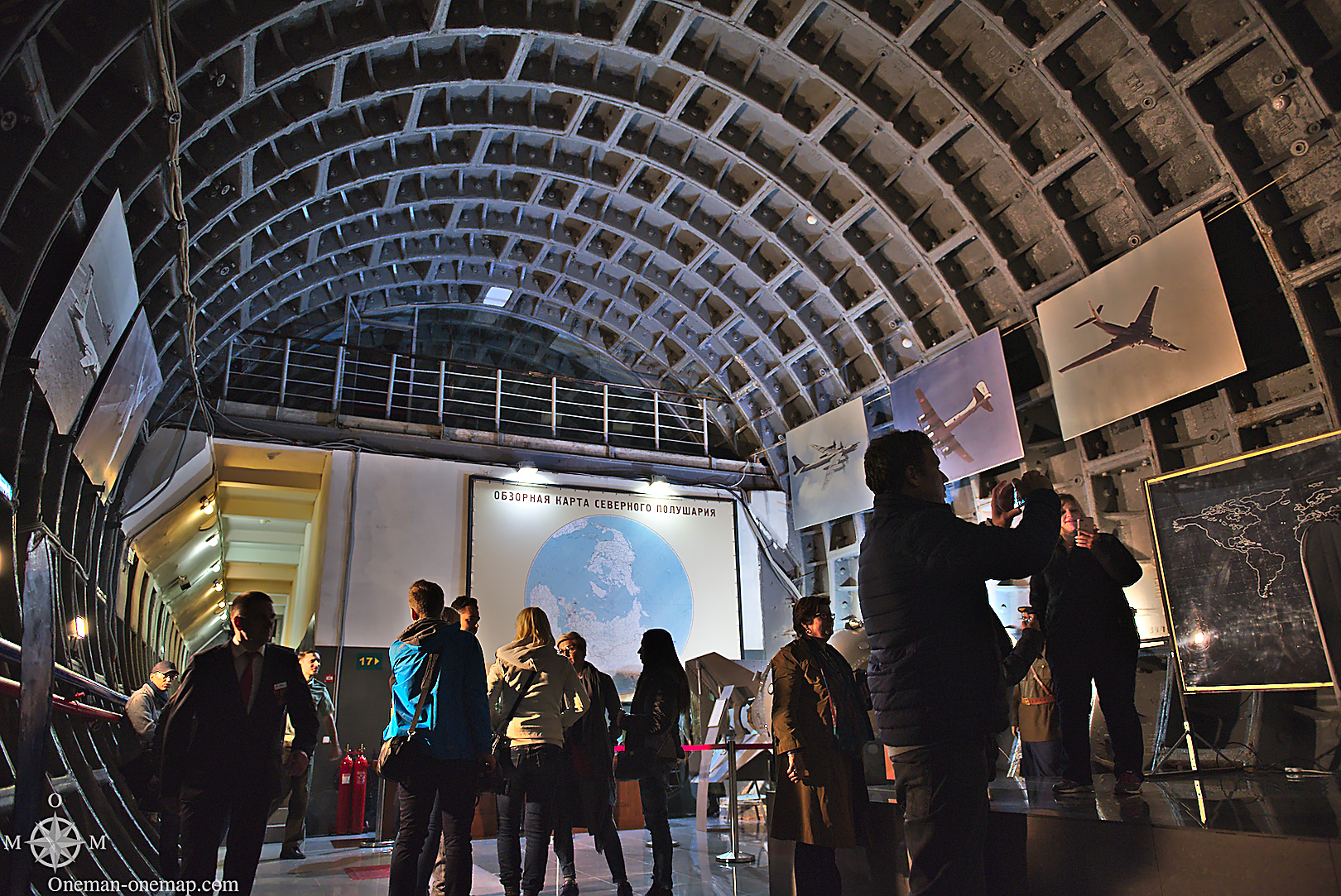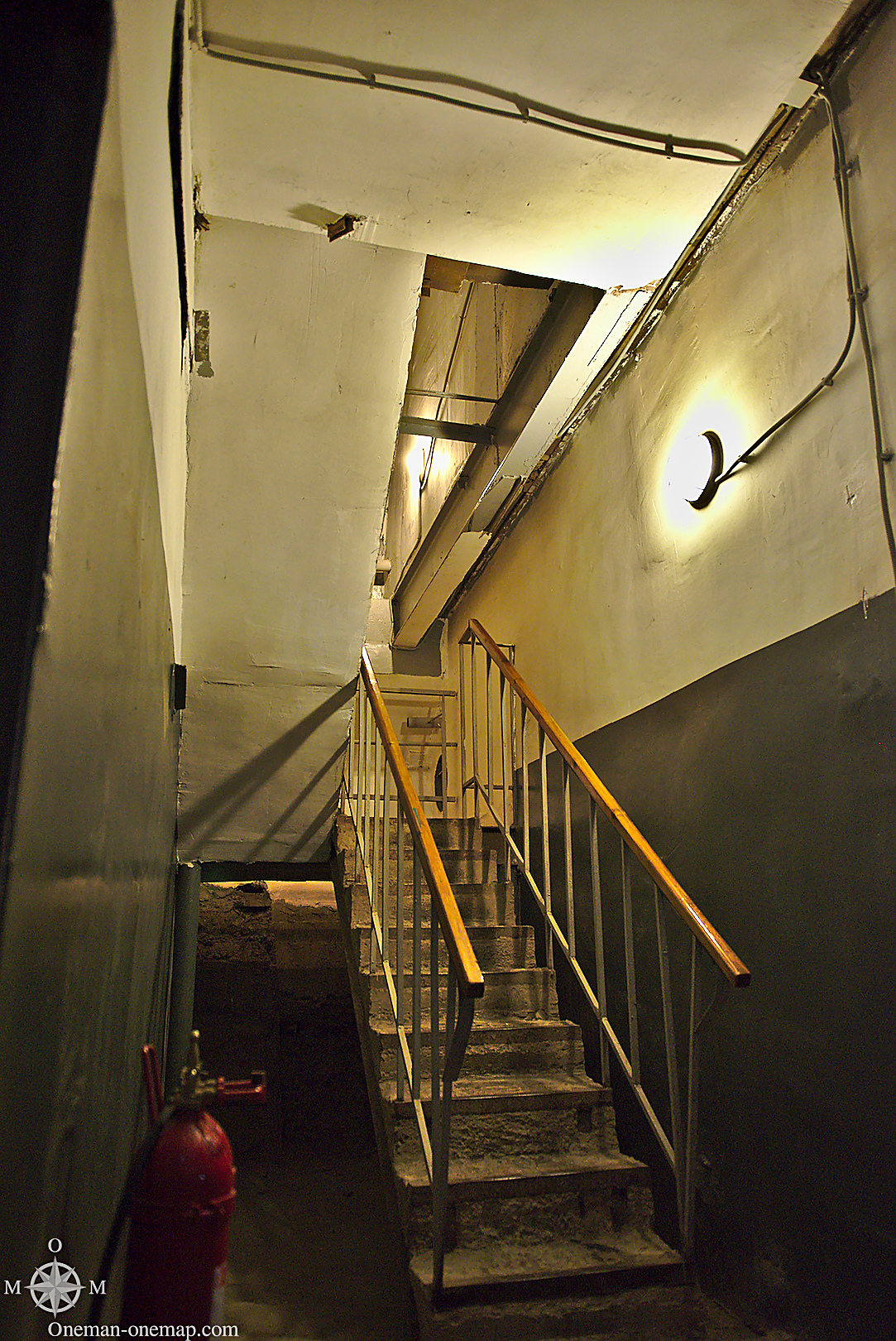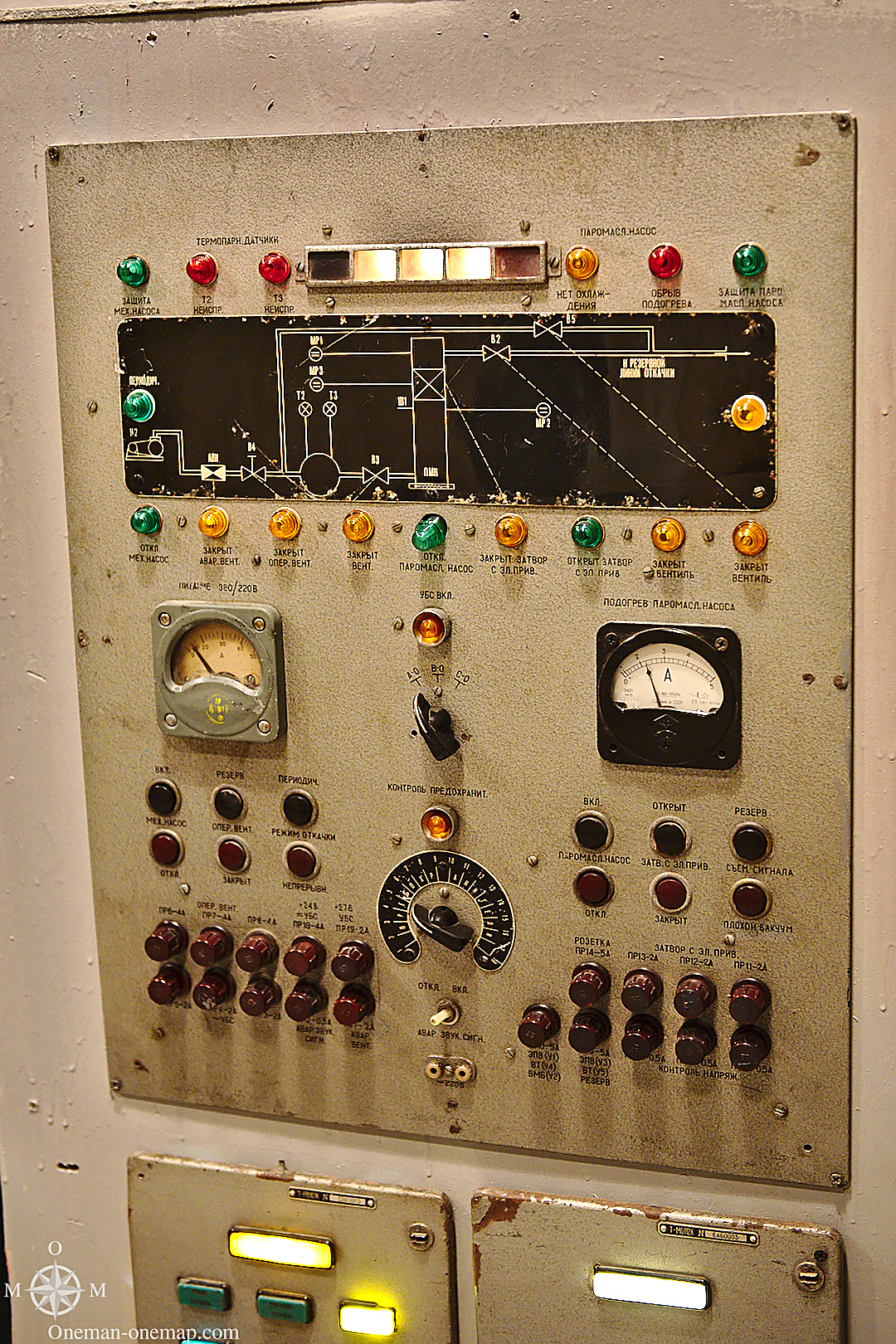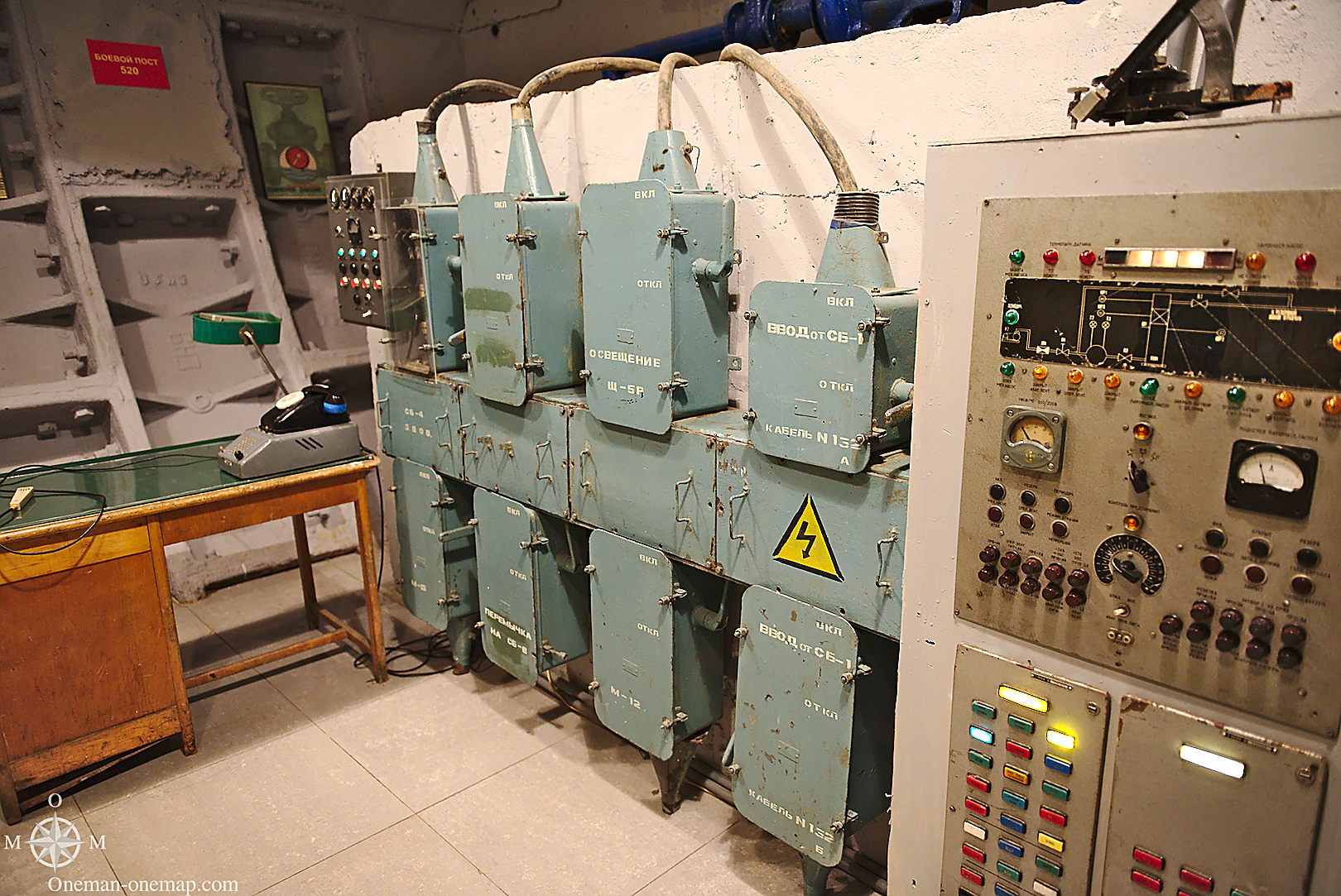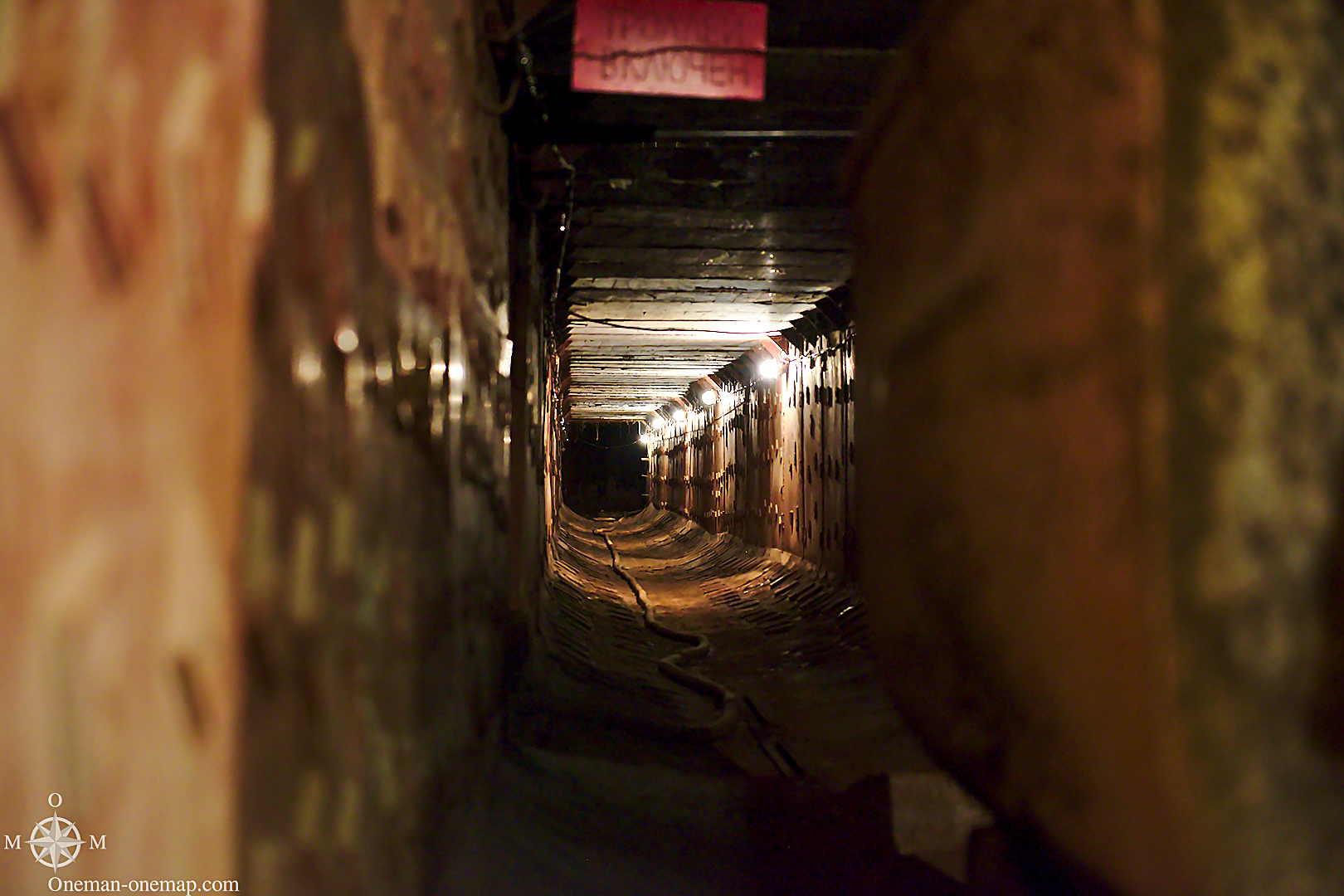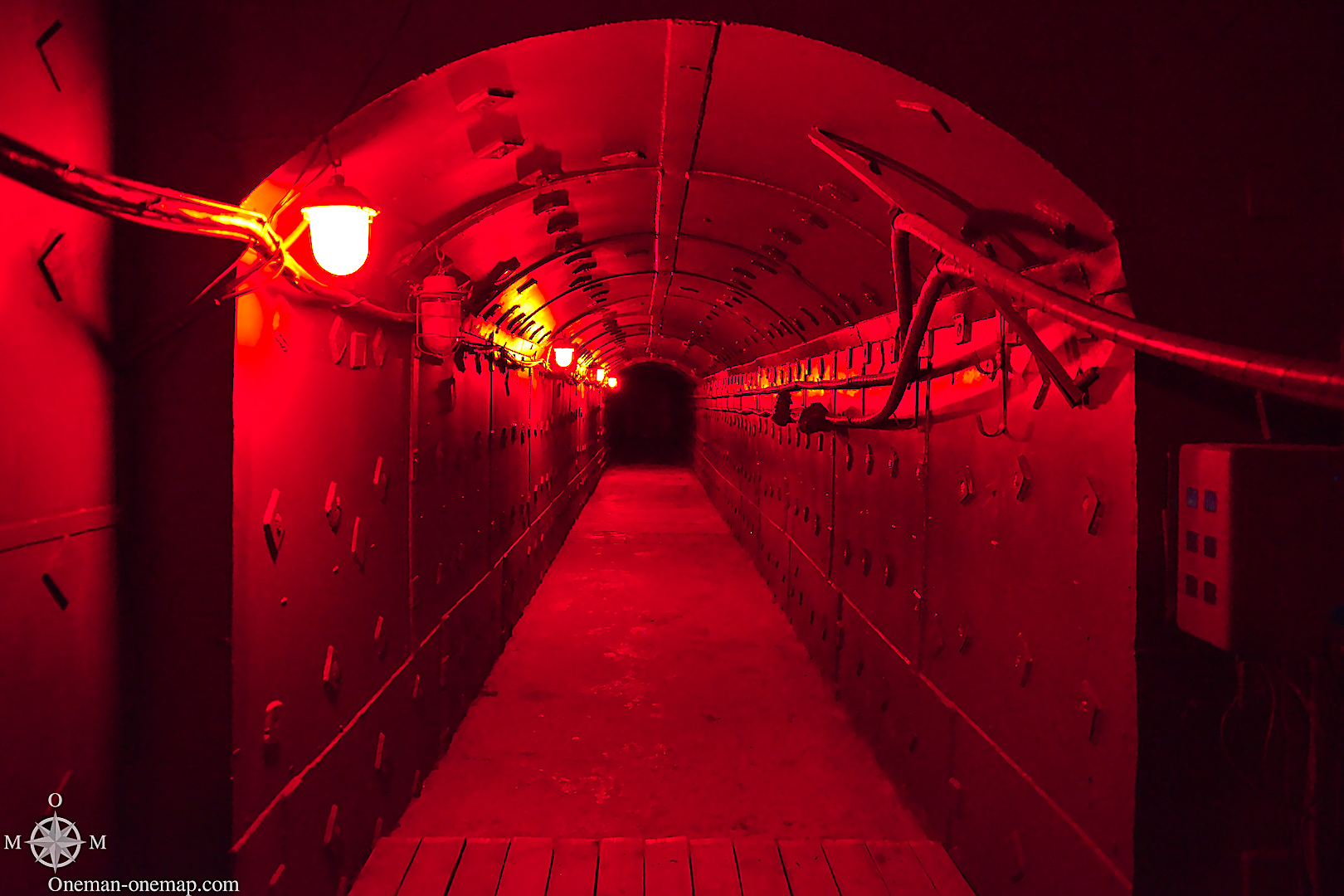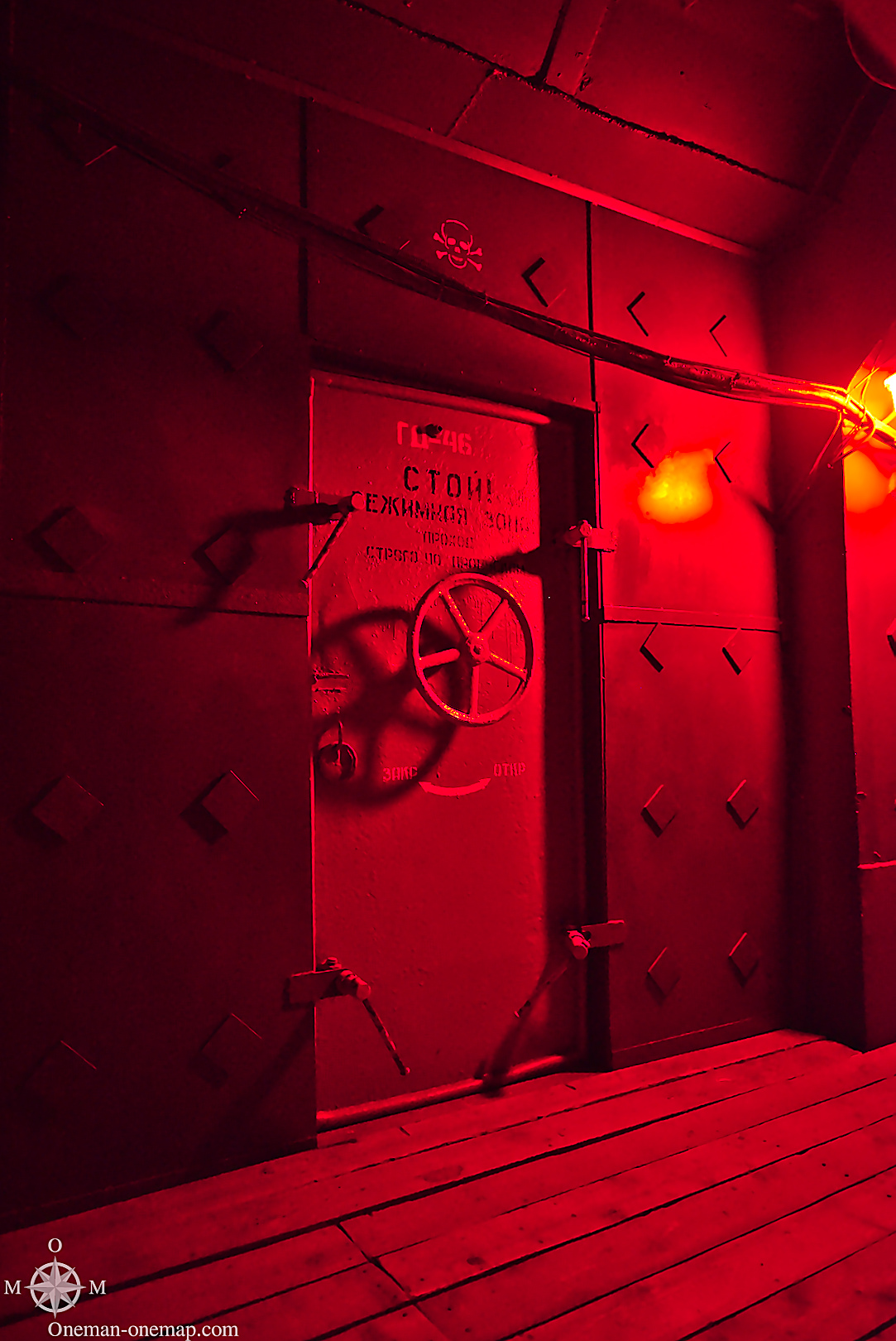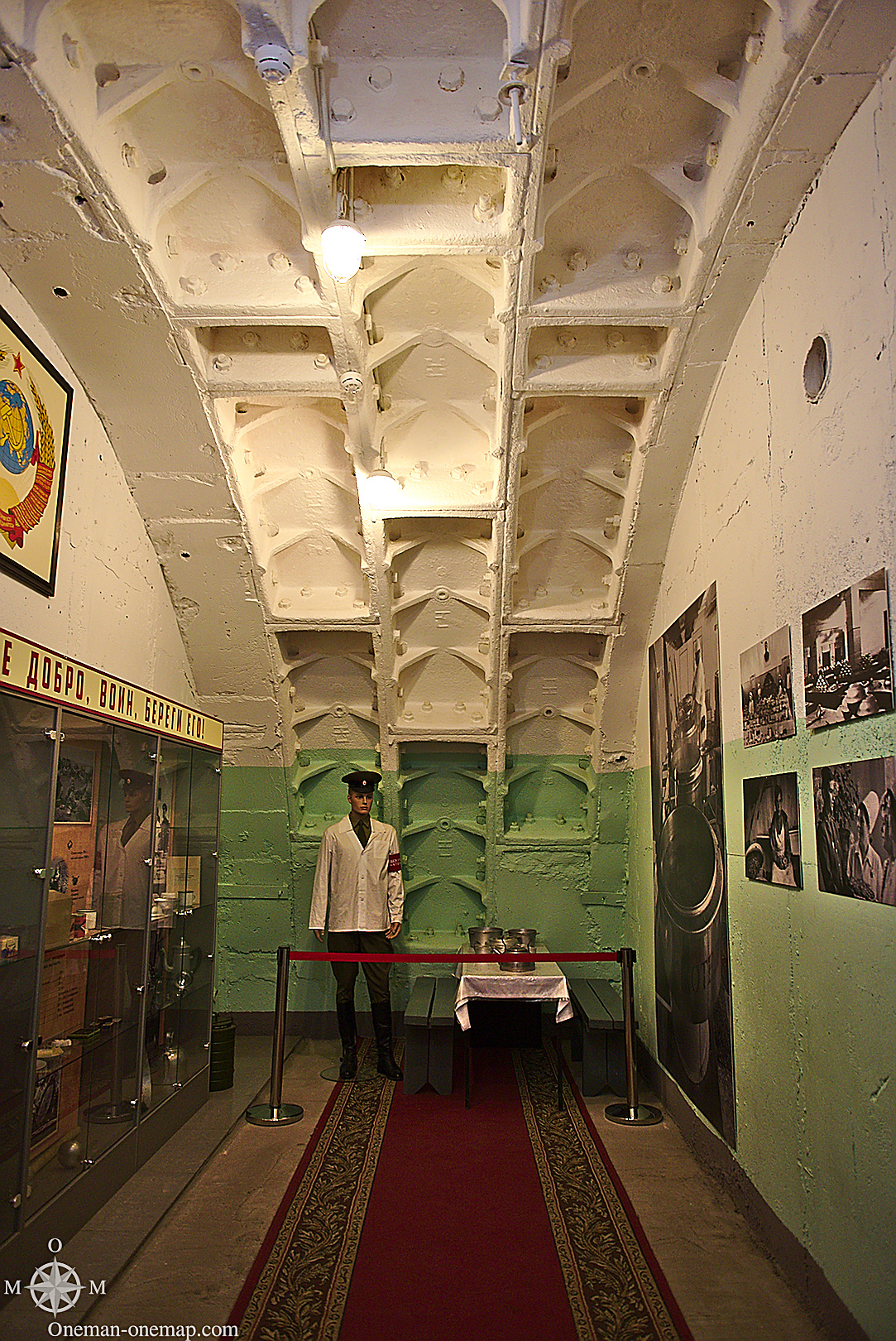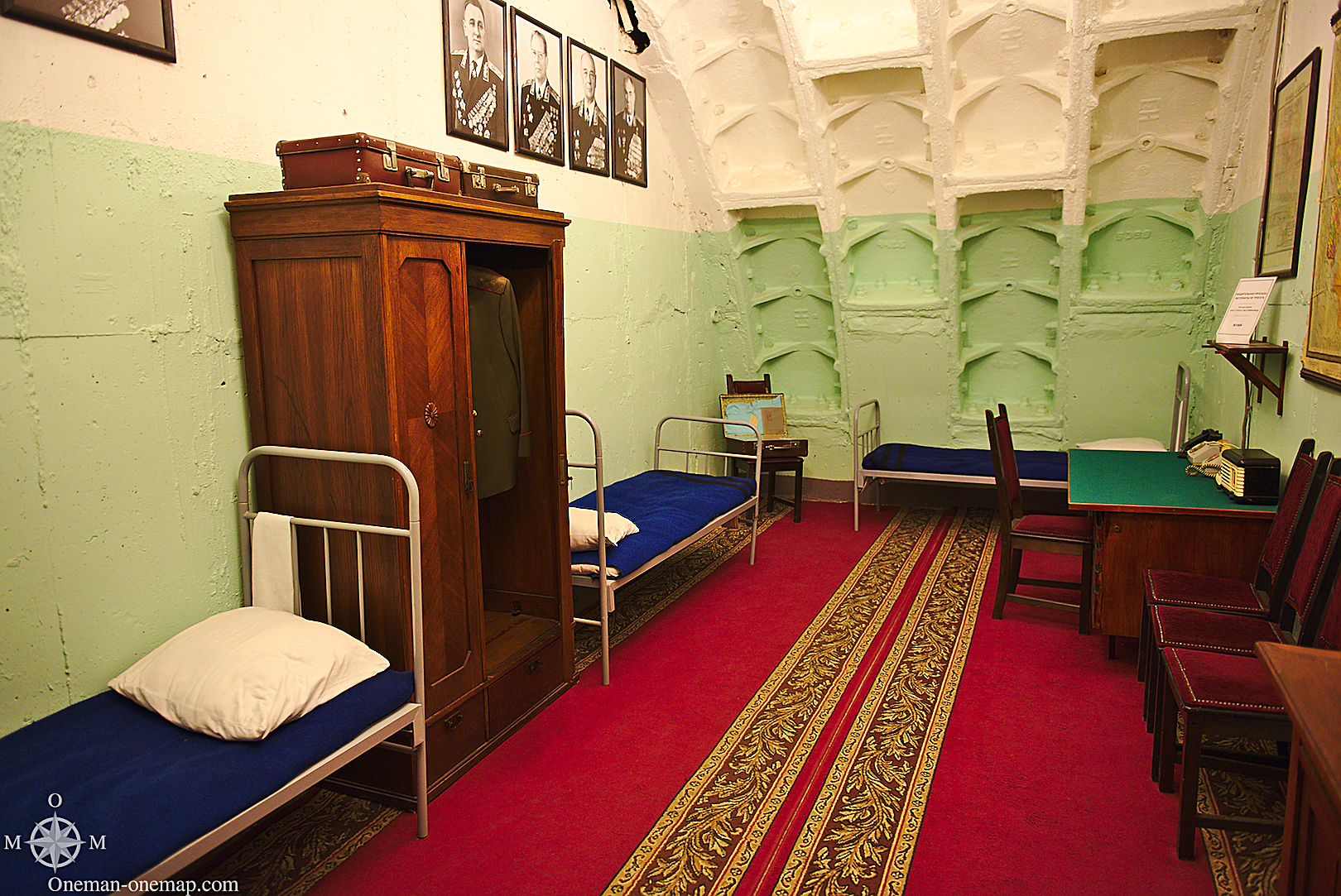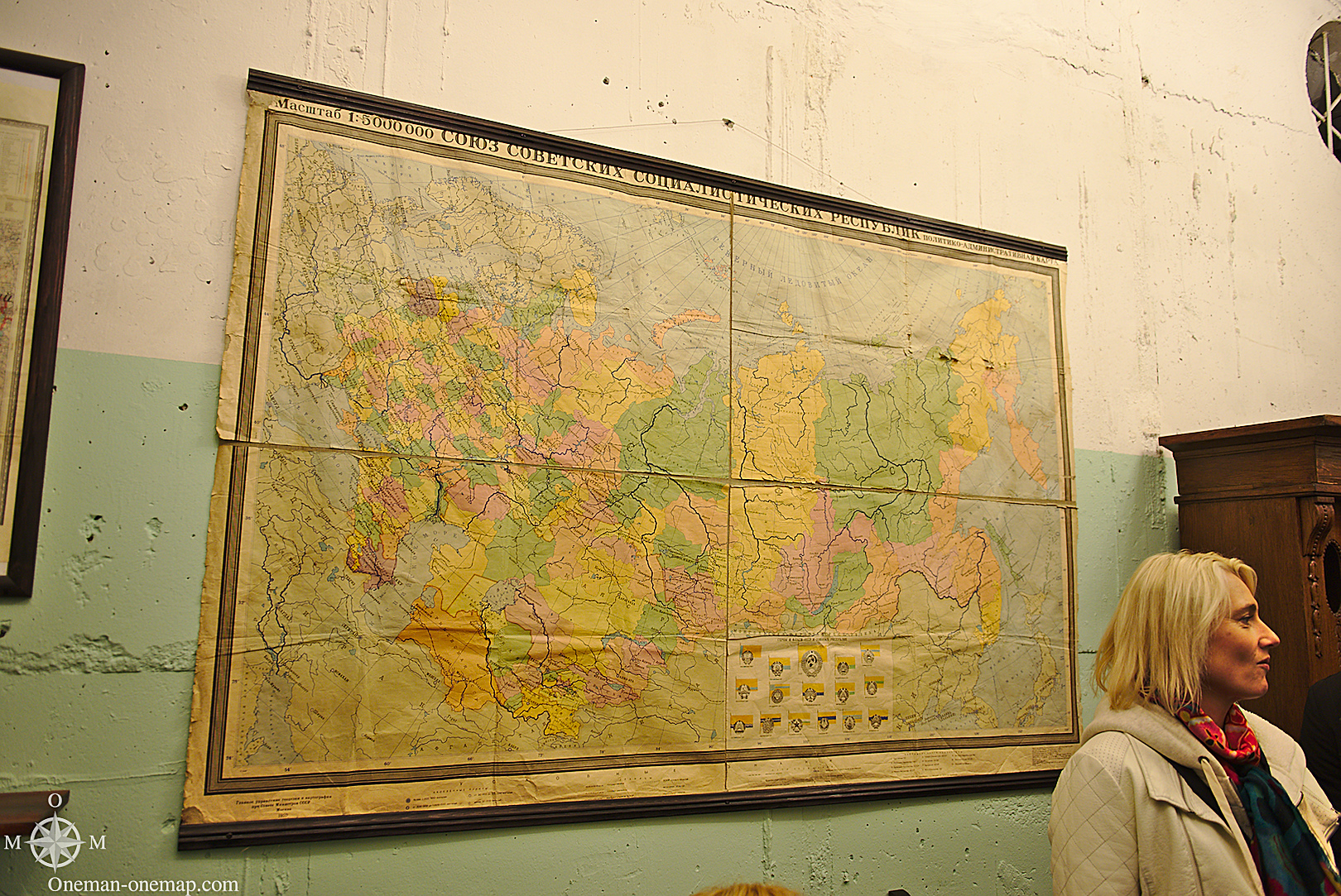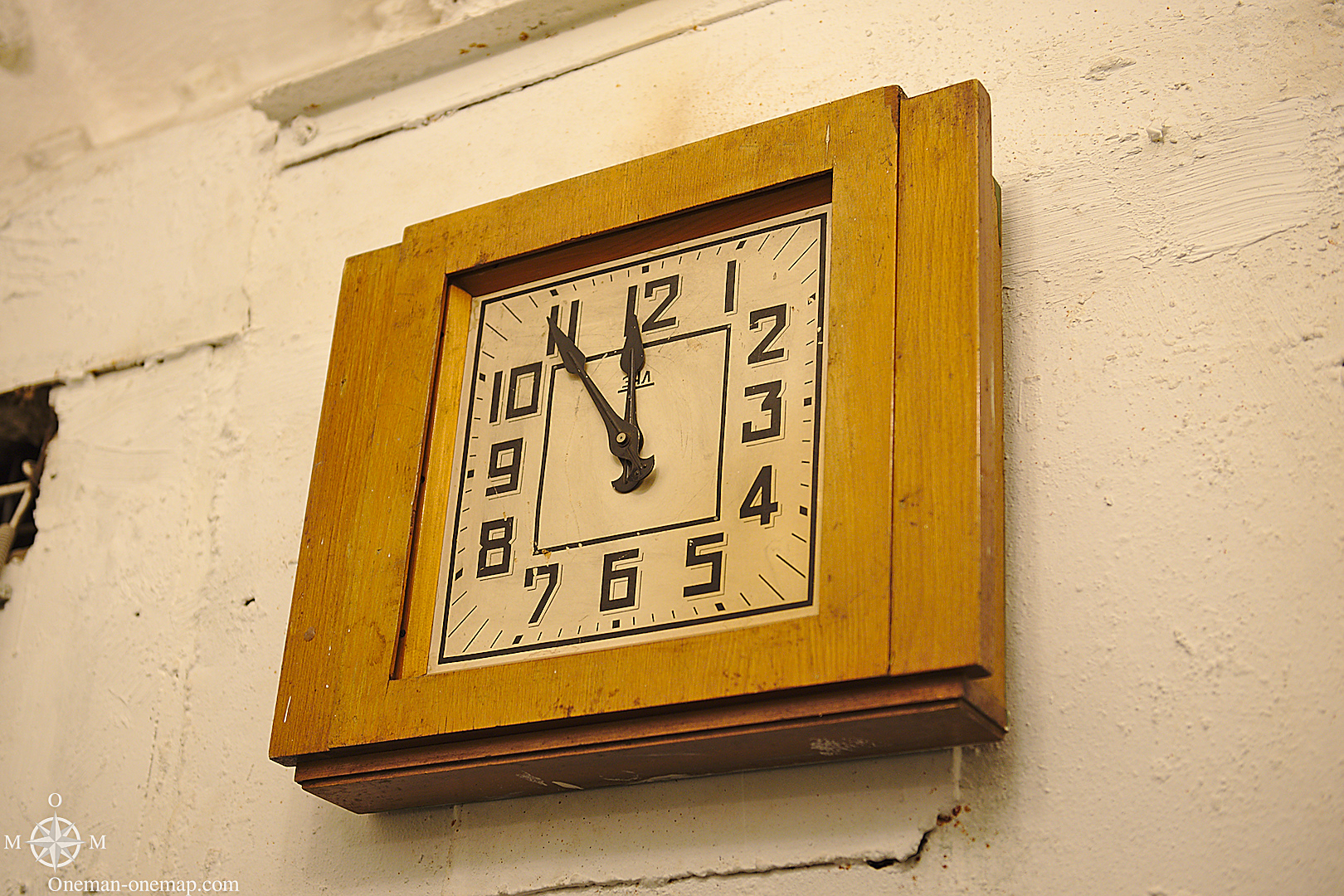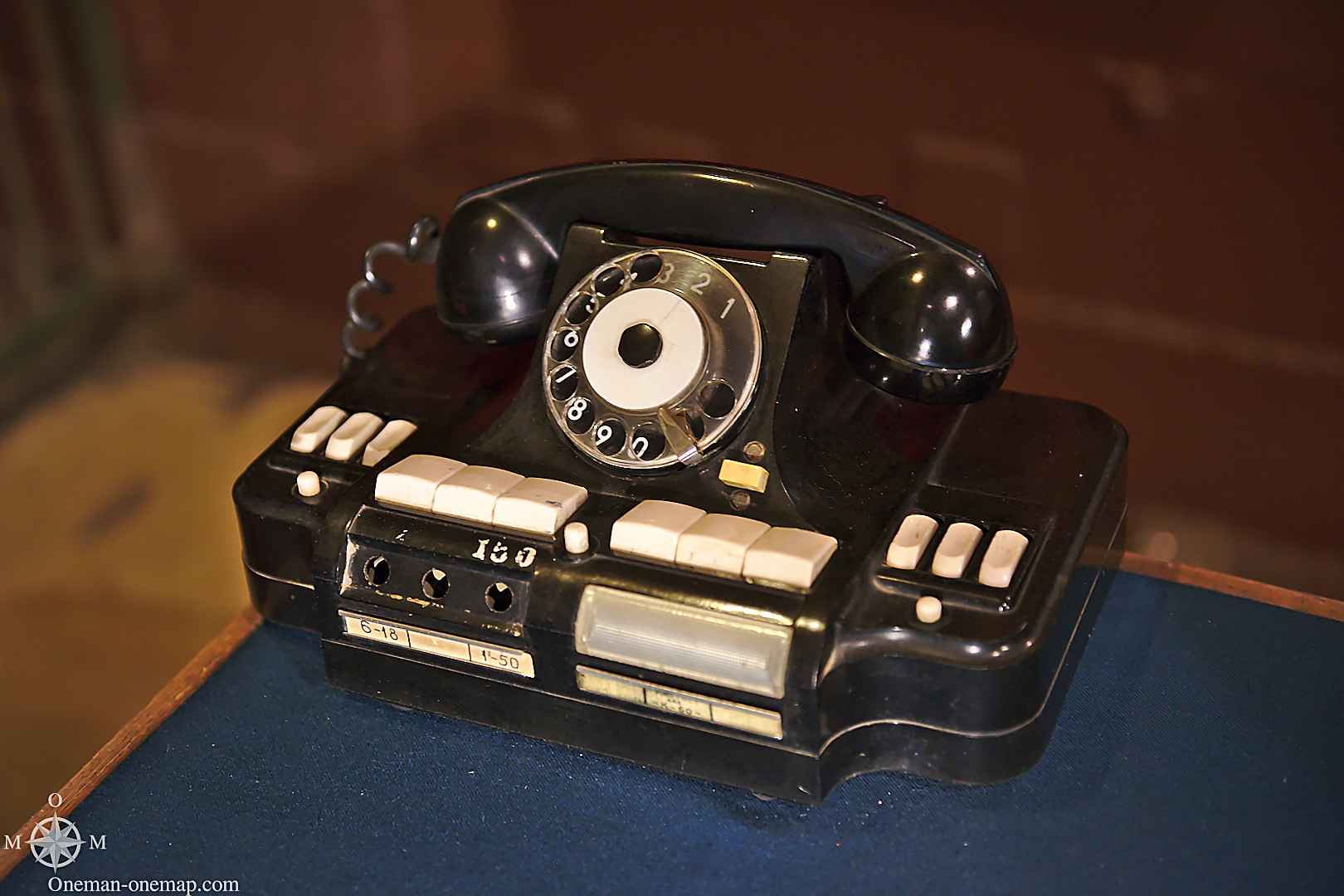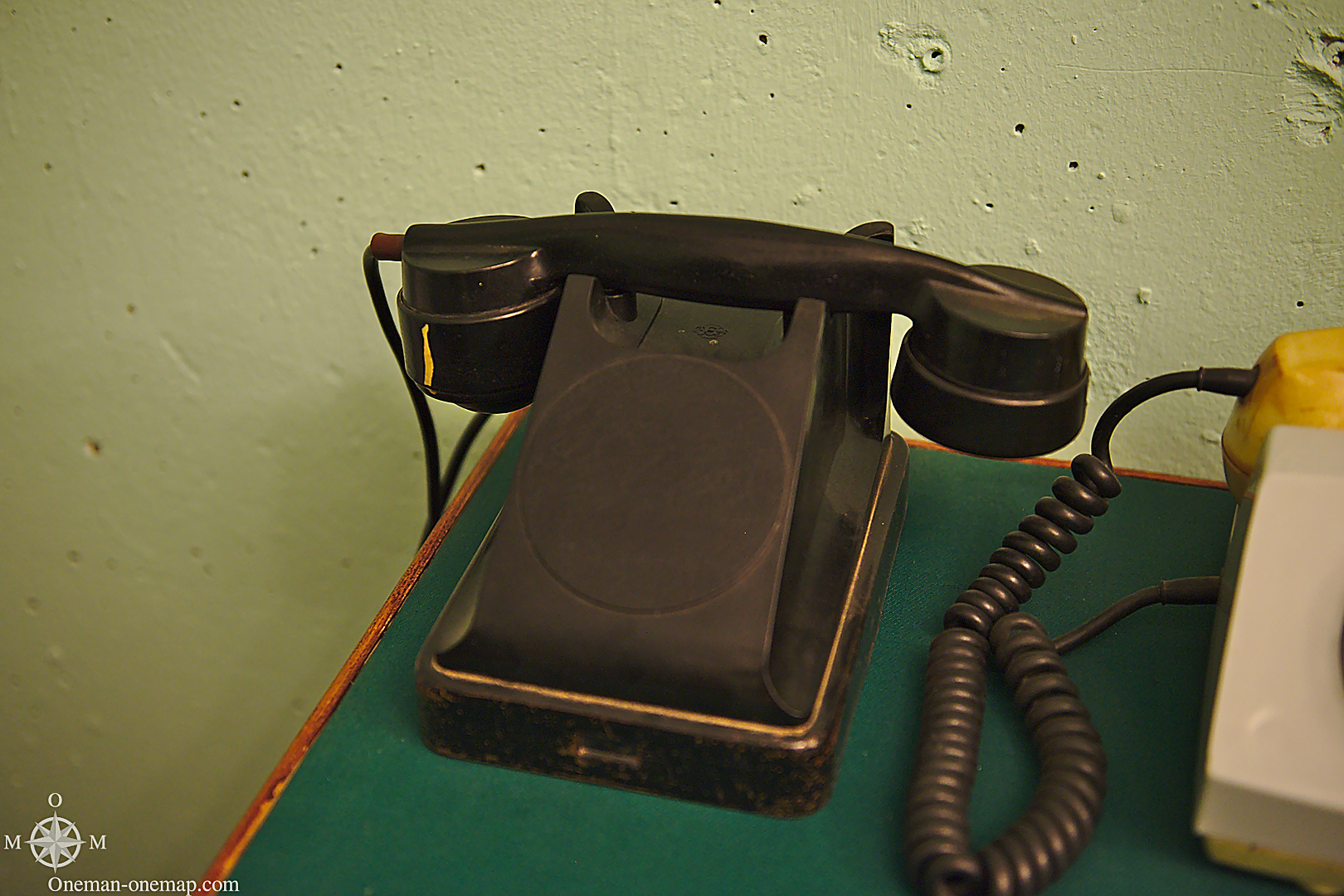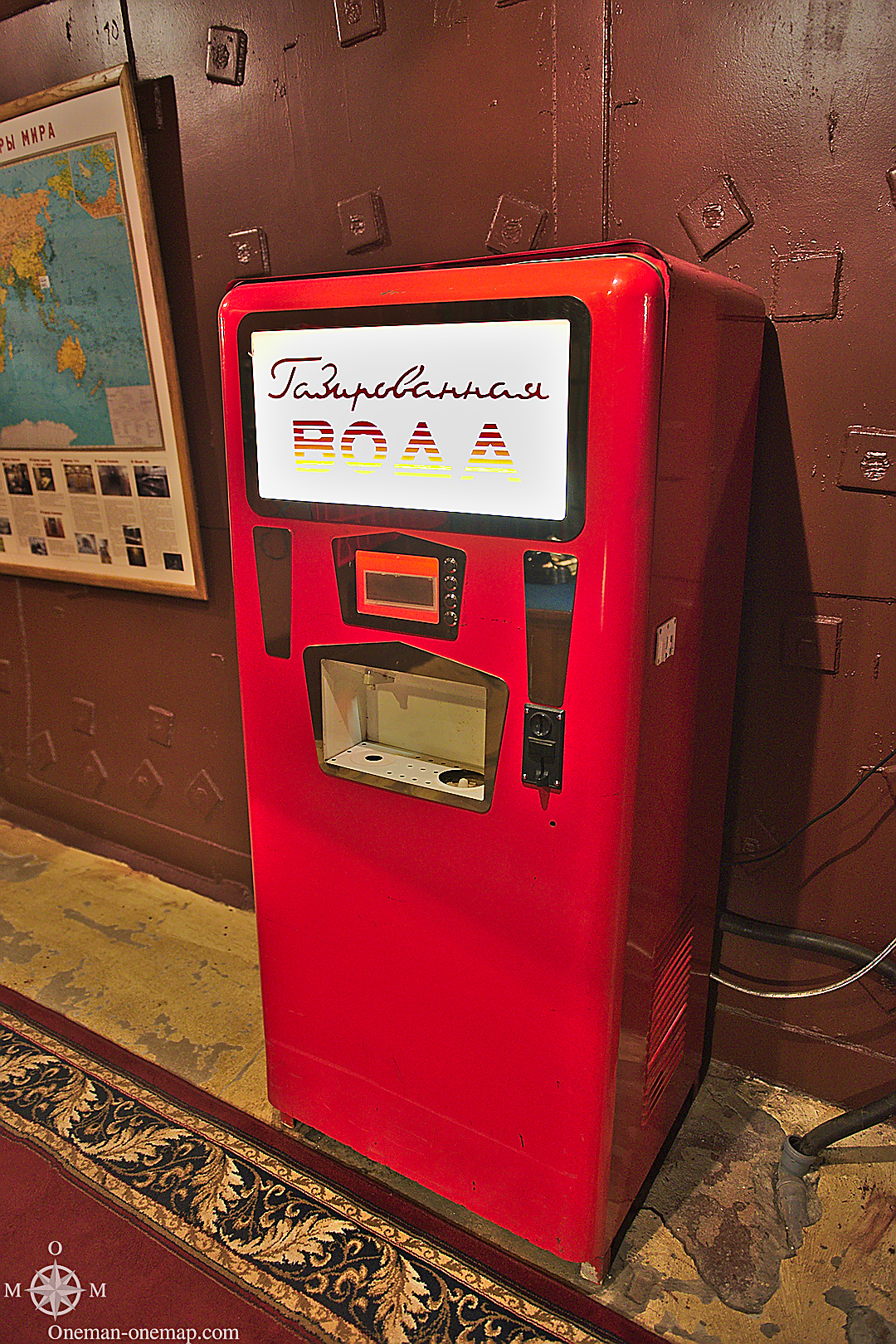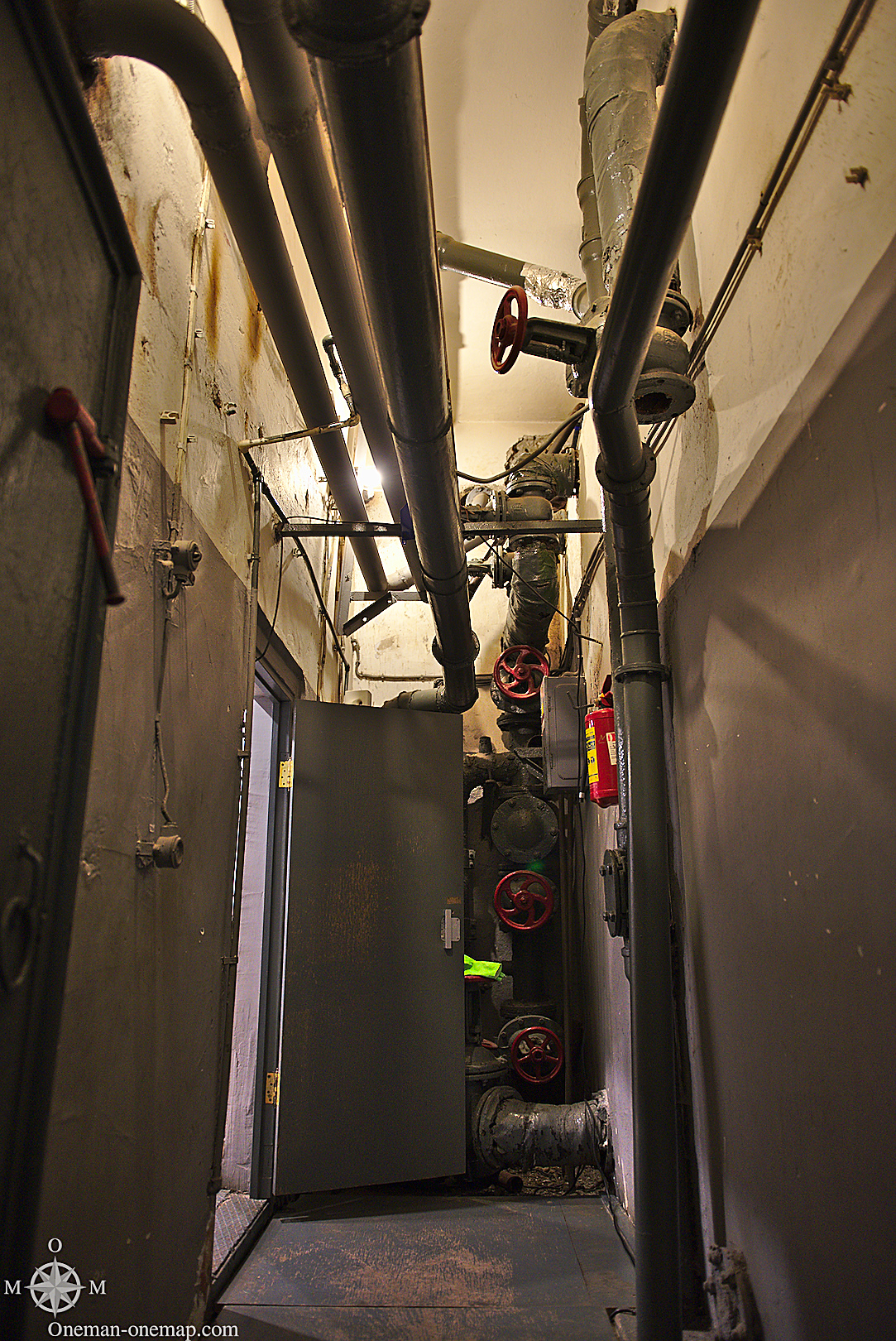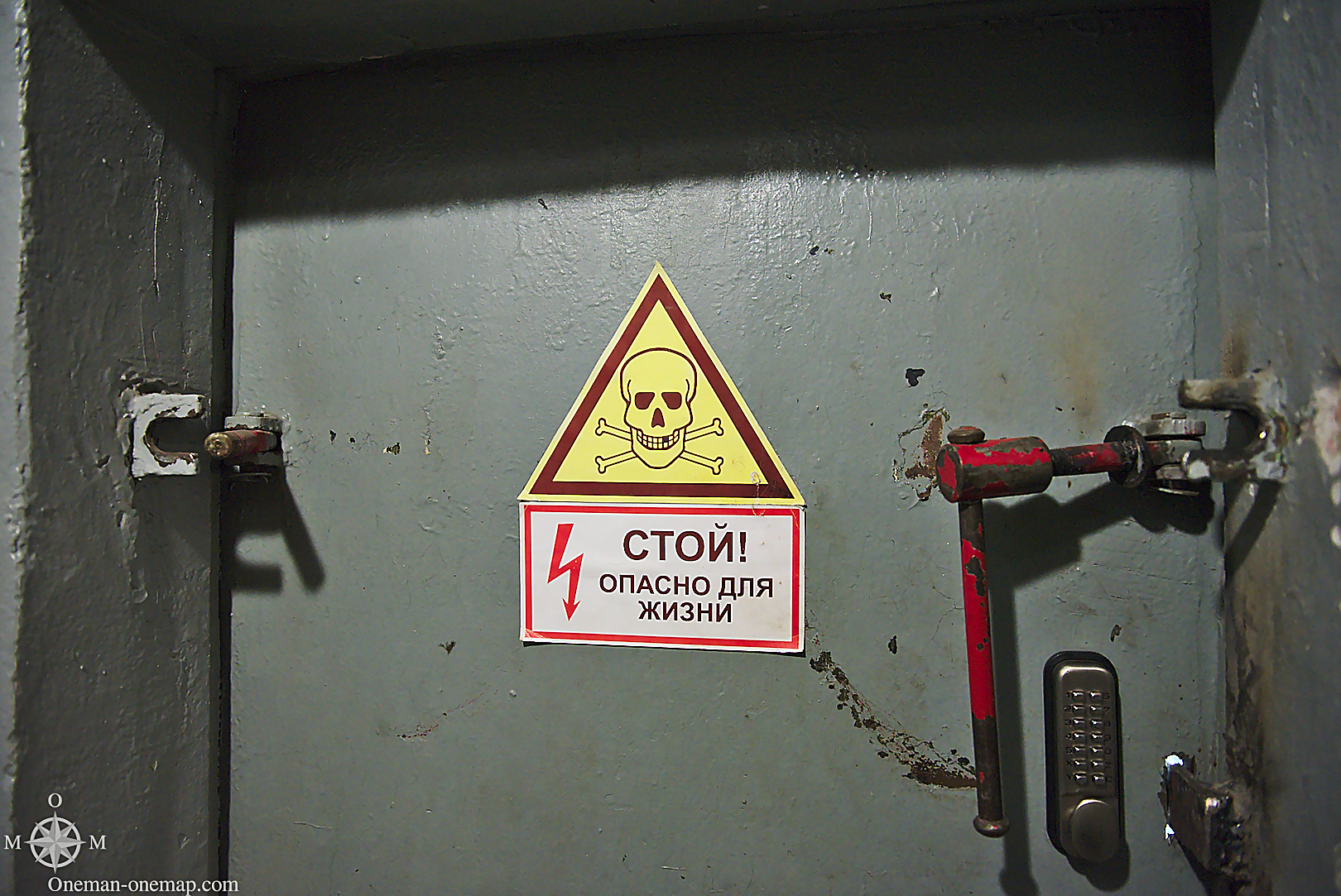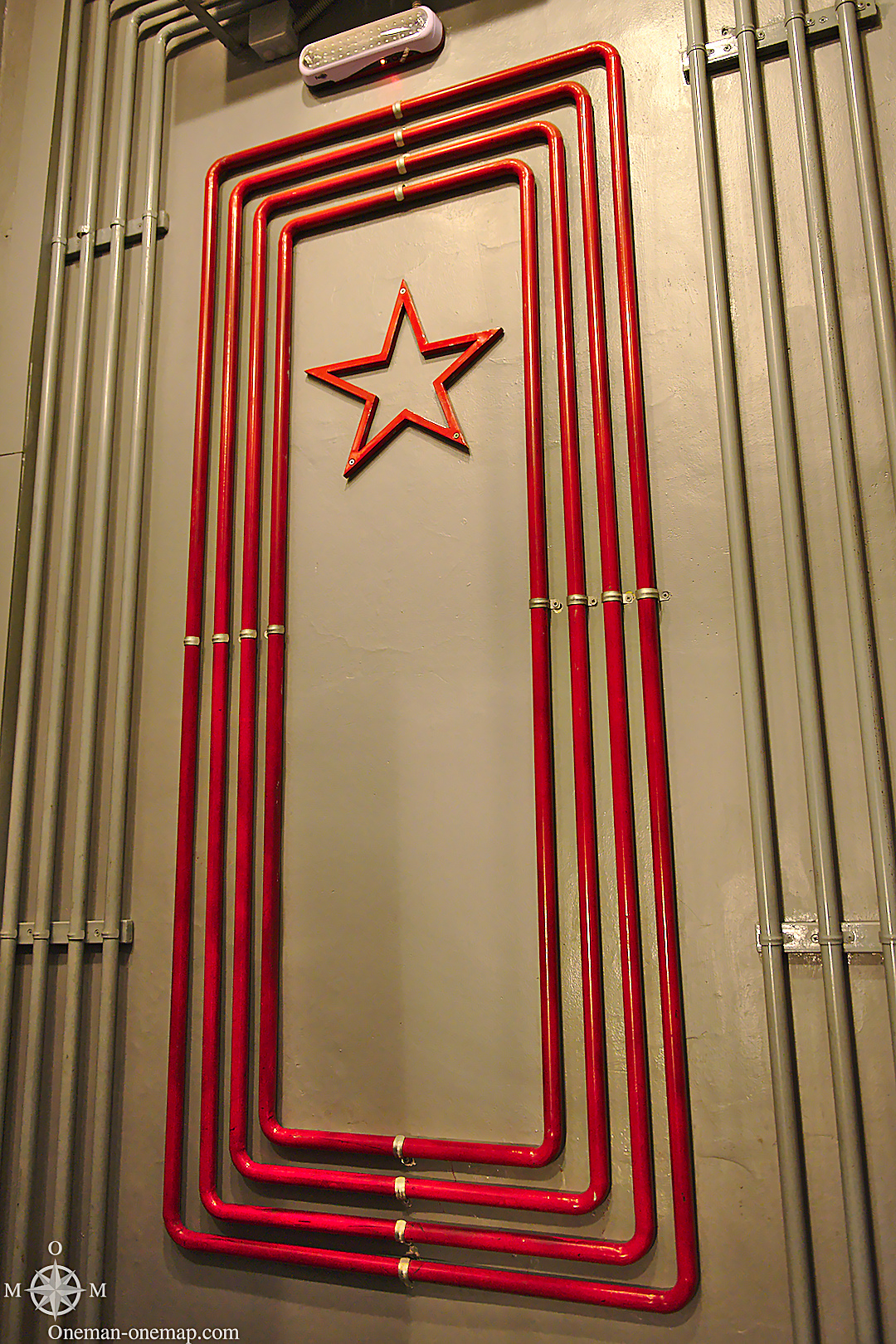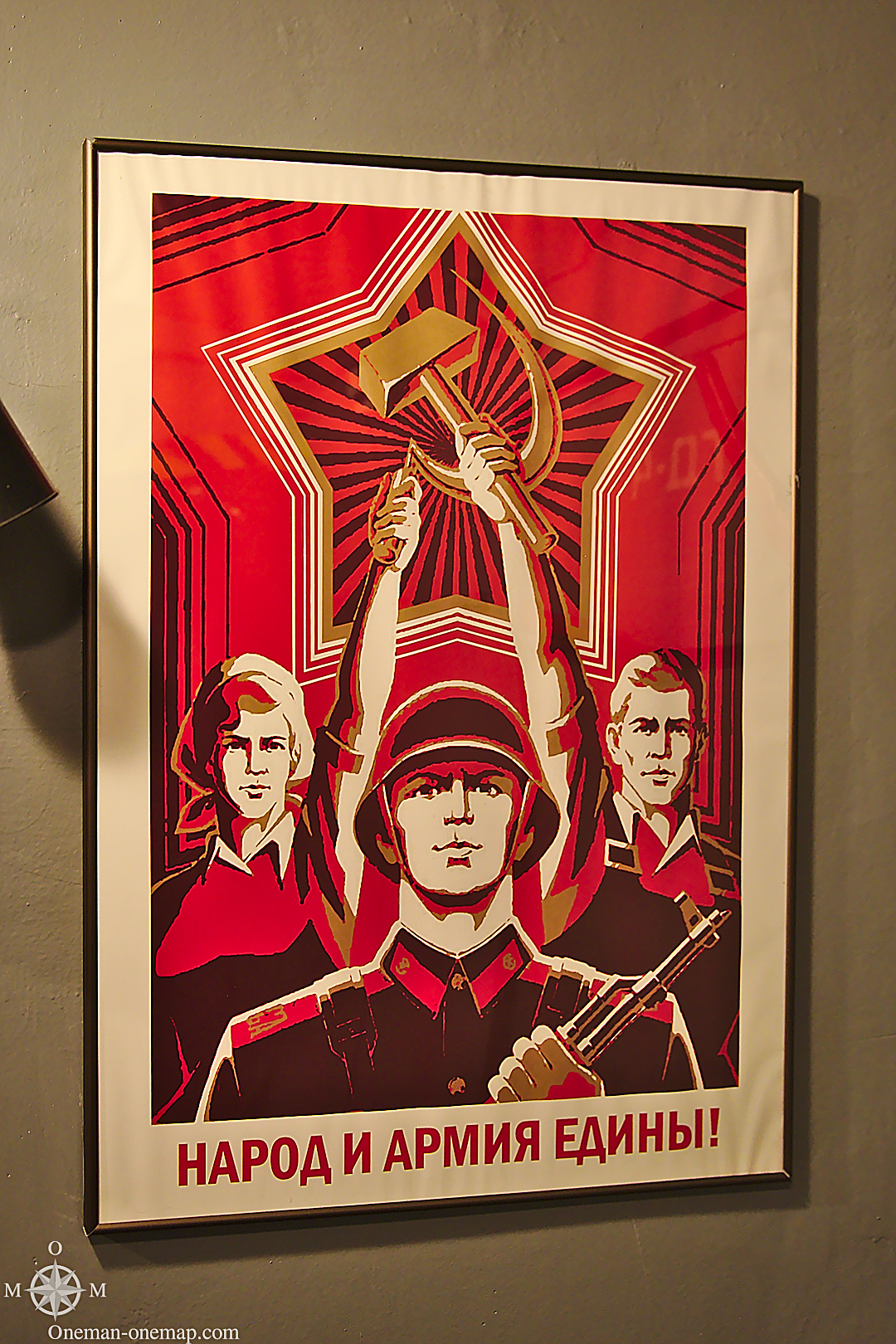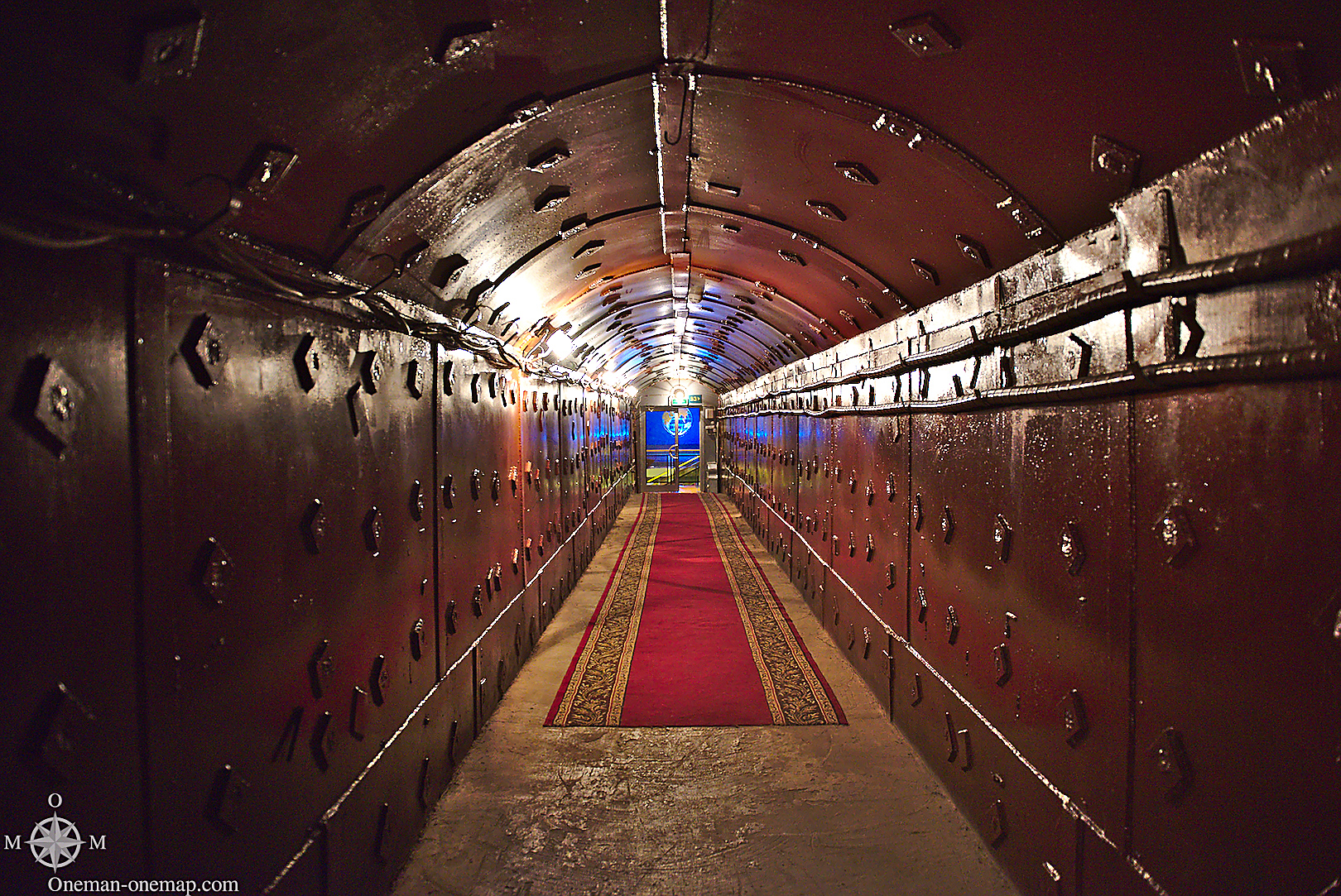Dieser Artikel ist auch auf Deutsch verfügbar. Click here to find out more about Russia!
Today it’s time to go underground! 🙂
With so much Military on the streets I also had to visit Bunker 42 in Moscow. The entrance is near the Taganskaya (Таганская) metro station and was quite easy to find, contrary to what some online postings suggested. You exit at Taganskaya, walk around two corners and then you already see the huge neon sign on the building across of it. The huge green door was hard to ignore as well…
Bunker 42 had been a Spare Long-Range Command Bunker of the Sowjet Air Forces from 1951 to 1995. In the 1960s life support systems had been installed so it could sustain operation during a nuclear attack. Multiple plans for renovation hadn’t been carried out over the years, and so the whole bunker ended up on a state auction in 2006 for 65 million rubles (about 930.000 €). A private company runs the museum now.
There was a guided tour in English language at 1:30 PM, which was quite expensive at a price of 1800 rubles (around 25 €). But there aren’t that many installations of this type which are open to the public.
The first nuclear bombs had been dropped in 1945, the first nuclear test by the Soviets had been carried out on August 29, 1949. Since 1935 all metro stations had been built to double as air raid shelters, but now they also had to be atomic bomb shelters. The stations on the Kolzewaja line (“Кольцевая линия”, “ring line”, line number 5) opened in 1950 are therefore located at a depth of between 35 and 53 meters and are equipped with huge blast doors.
What nobody knew back then: when construction on the Kolzewaja line had been finished, the workers had basically been instructed to just keep on digging and build four additional tubes near the new Taganskaja station. All the equipment and building material for atomic bomb shelters had been there already. They went a bit deeper though, the tubes are at a depth of 65 meters.
Here’s a picture of the location of the bunker (green) in relation to the Taganskaja station on line 5 (brown), the Taganskaja station on line 7 (purple) and the Marksistskaja (Маркси́стская) station on line 8 (red/orange).
The tunnels connecting the bunker to the Metro are closed, so we entered the installation through an emergency exit at the ground floor of a residential building. From there we walked down the stairs for 15 stories, to a depth of 65 meters.
The passages between the tubes are lines with steel and anchored into the rock. I don’t know if the Soviets had really used this beautiful red-brown color, I think the museum did a great amount of renovation 🙂
The map on the wall showed a number of similar installations in Europe. But not all of these are open to the public. The “Elefanten” bunker north of Stockholm can be visited about once a year, for example. Bunker 5001 in Wandlitz (website in German), around 40 kilometers from Berlin, is about to be re-opened by a society of private individuals. Donations are welcome 🙂
We continued through the passages and went past control posts. Nobody entered or exited the bunker without being noticed!
The soldiers came to work through the subway. But not in the light of day, secret trains would run in the middle of the night.
We entered Block 4, one of the four tubes. The standard tour does only cover parts of the installation. Other parts can be visited for fees up to more than 1000 € per person – that does at least include dinner and a “military choir”, though 😉
One of the many telephones. Pretty much every room had one.
This lady seems to type on an encryption machine. Sadly I don’t know which one it is supposed to be. The paper tape to the right points to a soviet Fialka (Фиа́лка, “Violet”), but that one does look a bit different on pictures.
We continued past two other control posts to the sanctuary…
“Hello? Comrade Stalin isn’t here at the moment, please try again later!”
The steel rings at the outside of the tube, also used for the construction of the Metro, can be seen in this picture.
Comrade Stalin probably ever only came to visit the bunker in the form of this doll. The German troops never invaded Moscow, and the Cold War never went hot, so neither the “Stalin Bunker” in Ismailovo (Измайлово) a bit outside of the city nor Bunker 42 were ever really used.
This might have been the table from which the Soviet Generals ordered their long-range bombers to attack the United States of America. We can only be glad that things never went as far!
If you look closely, you can see parts of an escalator in this non-moving staircase. The lamps came out of the Metro stock too.
A replica of RDS-1, the first soviet atomic bomb. It is pretty much identical to Fat Man, one of the first bombs developed by the USA. Not by coincidence: German spy Klaus Fuchs handed over the blueprints to the Soviets.
A model of a MAZ-7917 transporter carrying a mobile launcher for a РТ-2ПМ Тополь (“RT-2PM Poplar”) intercontinental ballistic missile. The 800 kiloton warhead could roughly destroy New York City. Several hundred of these launchers are allegedly still in service today.
To give us a feeling for the seriousness of atomic warfare, our guide started a simulation. Two men from the audience were chosen to be soviet operators and used the provided keys to launch their rocket (just like in the movies!). The screen above us first showed a tactical view, which was replaced by a lot of nuclear explosions after the launch.
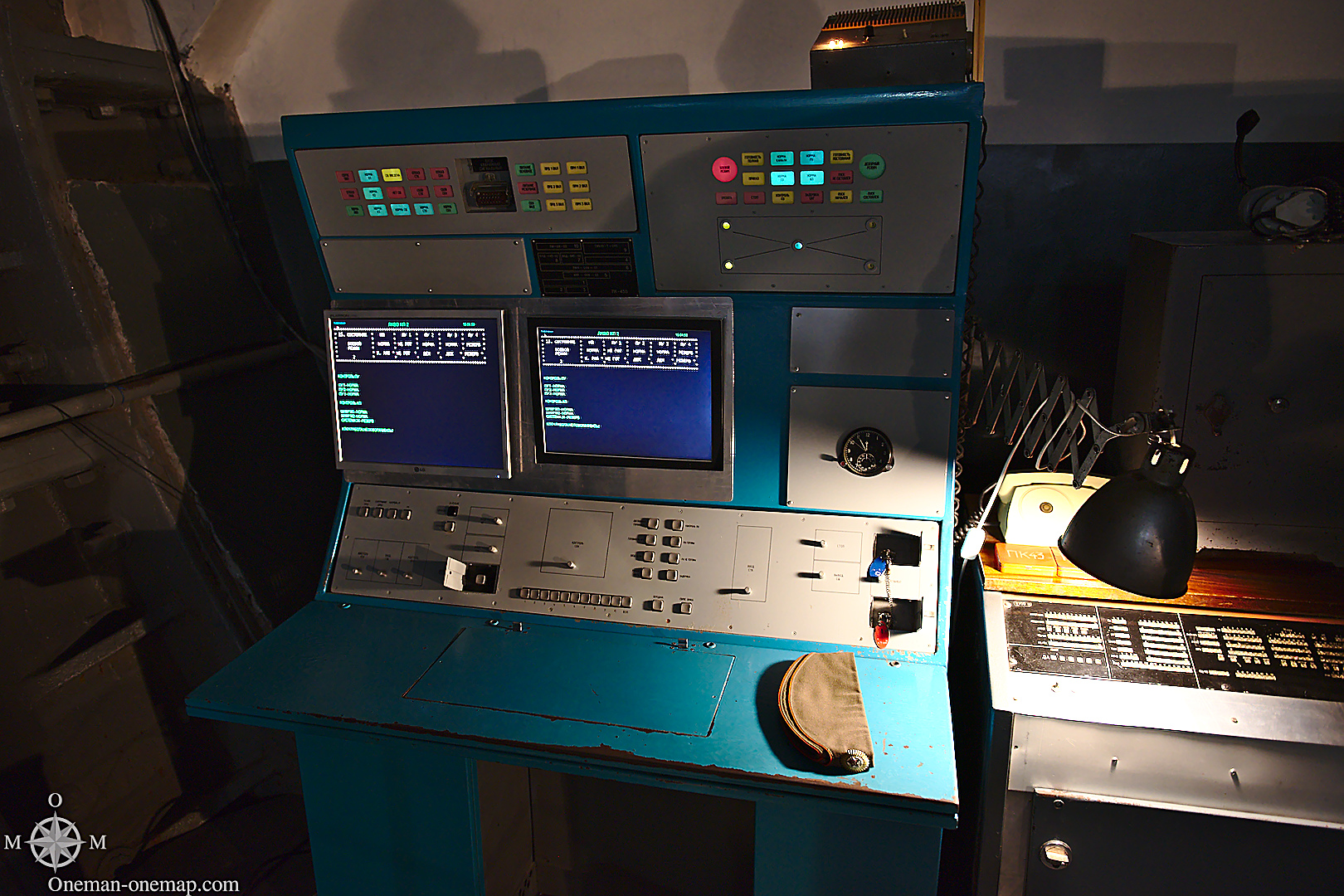
Then we continued to the life support systems. Several hundred thousands liters of water used to be stored here, additionally there were two deep fountains.
One of the tunnels connecting the Bunker to the Metro.
In this passage we could witness the simulation of a nuclear strike. The guide sent us to the other end and closed the door. We stood there in total darkness until a deep bang hit us, a siren started sounding and red lights blinked. Quite creepy, to say the least!
The guide claimed that he had never opened this door because the military was still operating behind it. As if… 😉
The admirals had the luxury of only having to share their room with two other people. The situation would have probably not been so cozy in the rest of the bunker, it is said that it could have housed 3000 people.
Some beautiful artifacts from the Cold War…
Strange telephones. The one has too many keys, the other doesn’t even have a dial.
(Solution: The first one has some kind of switchboard function, the second one can only be called to deliver instructions one-way.)
This water cooler looks a bit like a model from the USA, but was extremely important. When the bunker was fully occupied, the air conditioners couldn’t keep up any longer and air temperature would climb up to 35 degrees Celsius. So there were water coolers like this one at many corners.
The restaurant at the end of this passage clearly hadn’t been there back then 🙂
And because it was still raining and the Metro was just one tube away, I’ll continue there next time!
This post was written by Simon for One Man, One Map. The original can be found here. All rights reserved.

